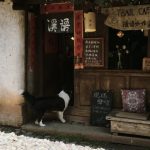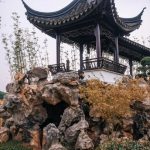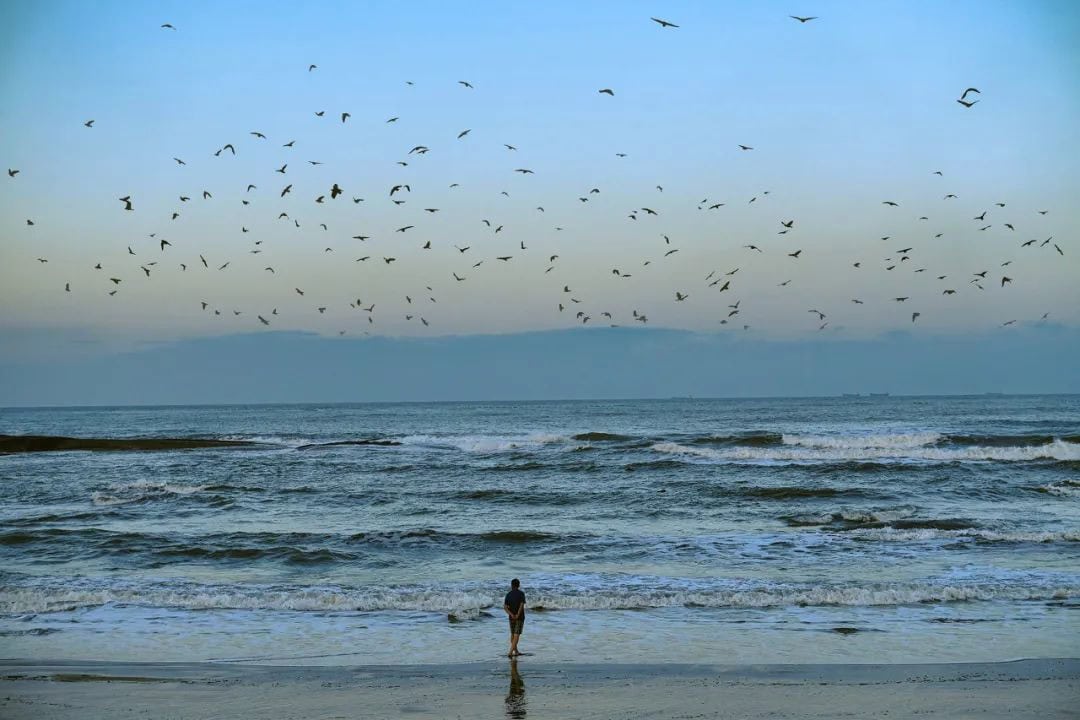
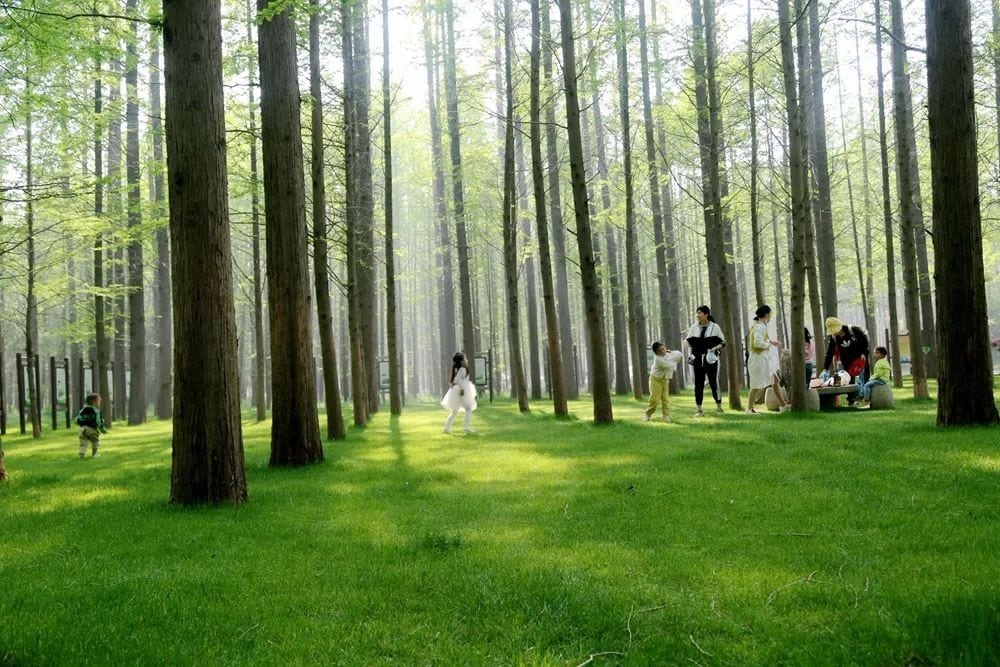
On Kuaishou, live streaming has a perpetual theme—seashore foraging, the “traffic code” that never fades.
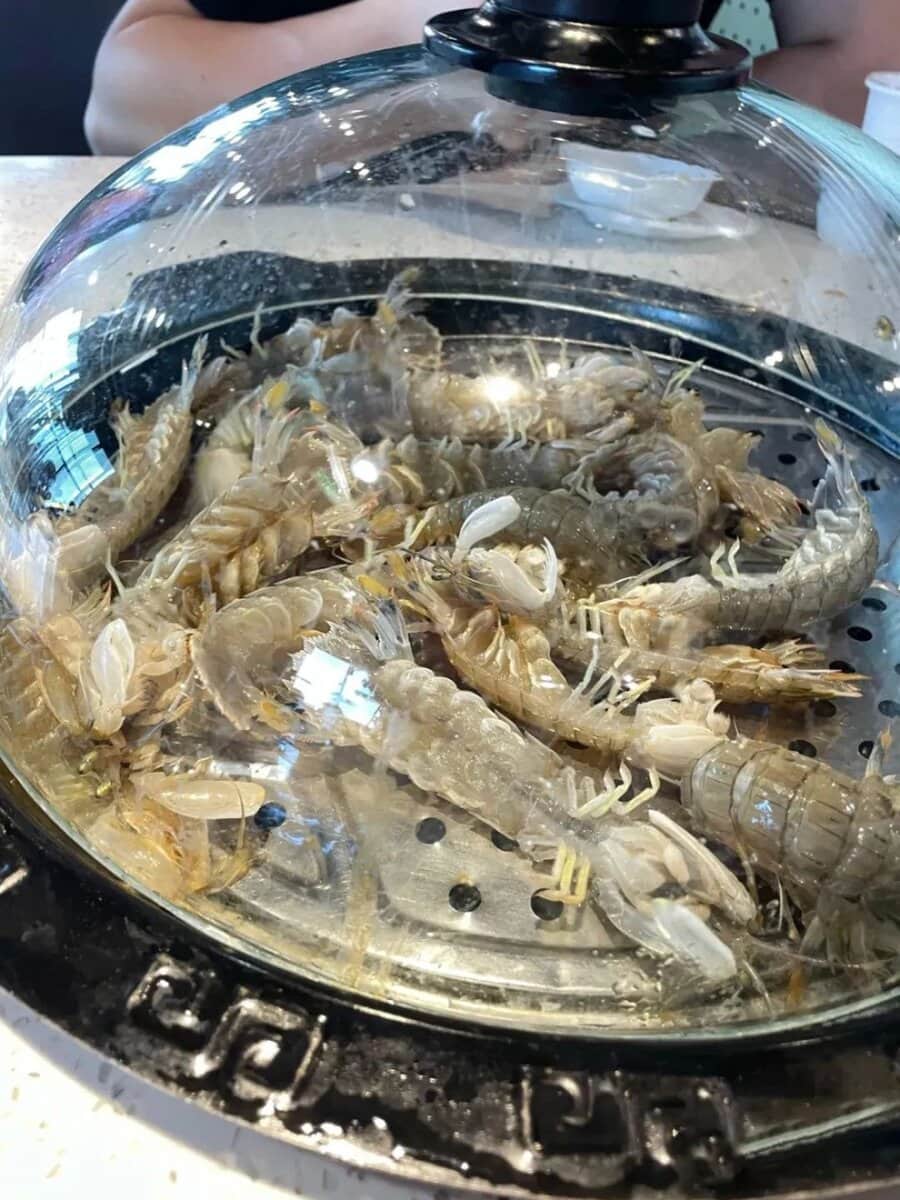
Whether it’s a Monday so busy that people are overwhelmed, or 5 a.m. when the whole city is asleep, there are always tens of thousands of people holding their phones, watching with great interest.
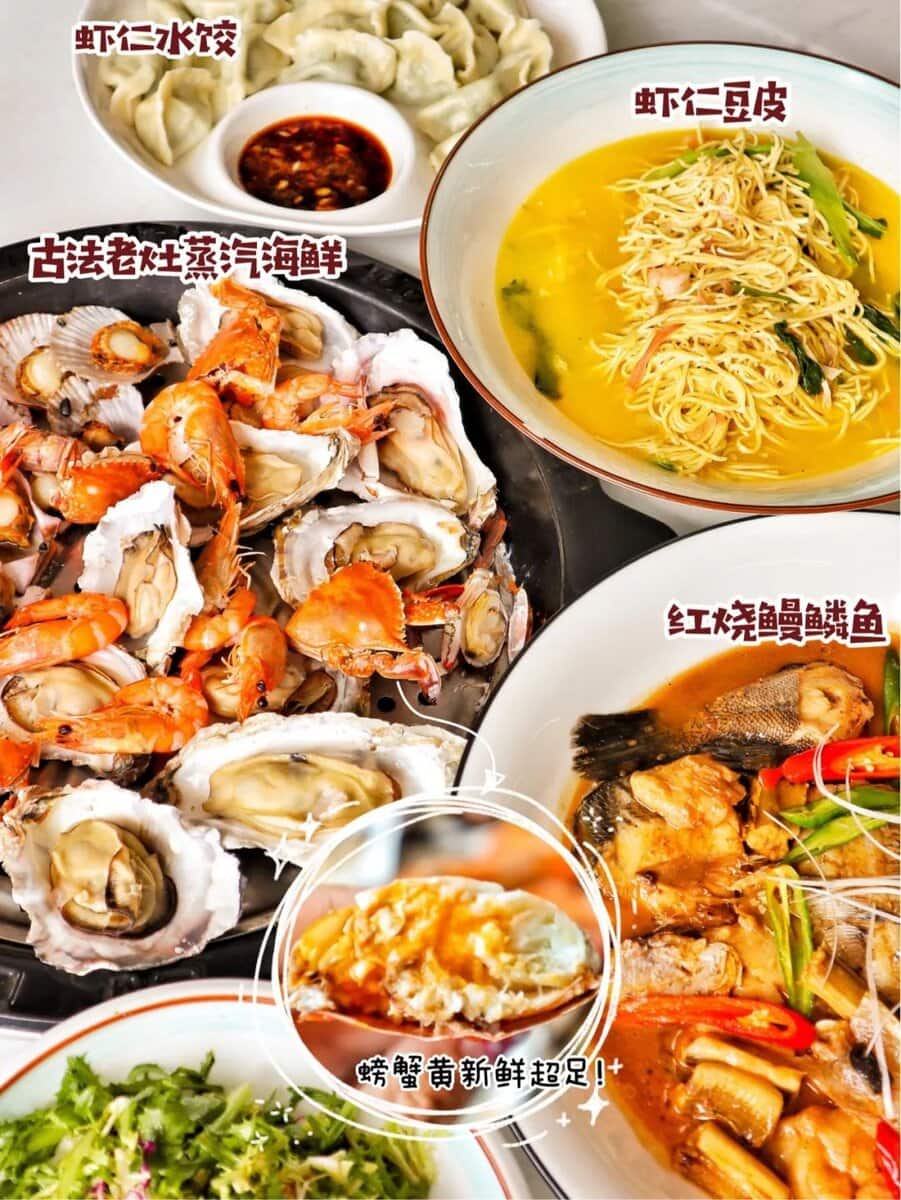
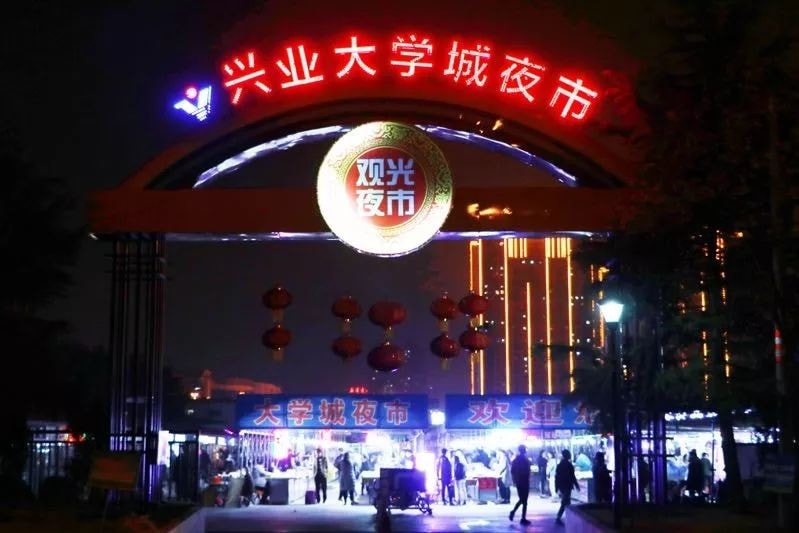
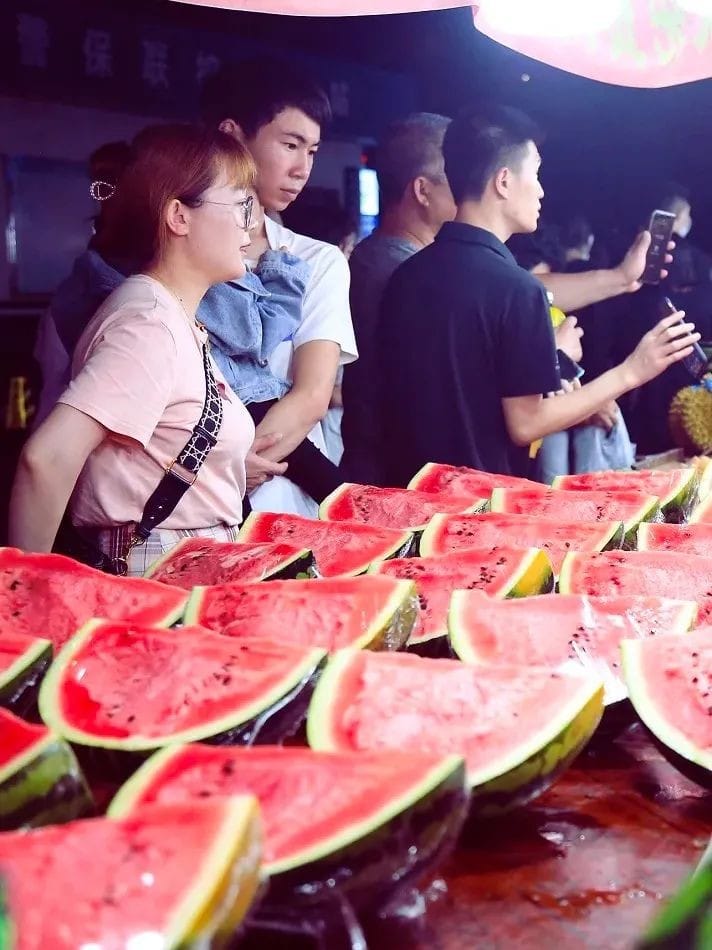
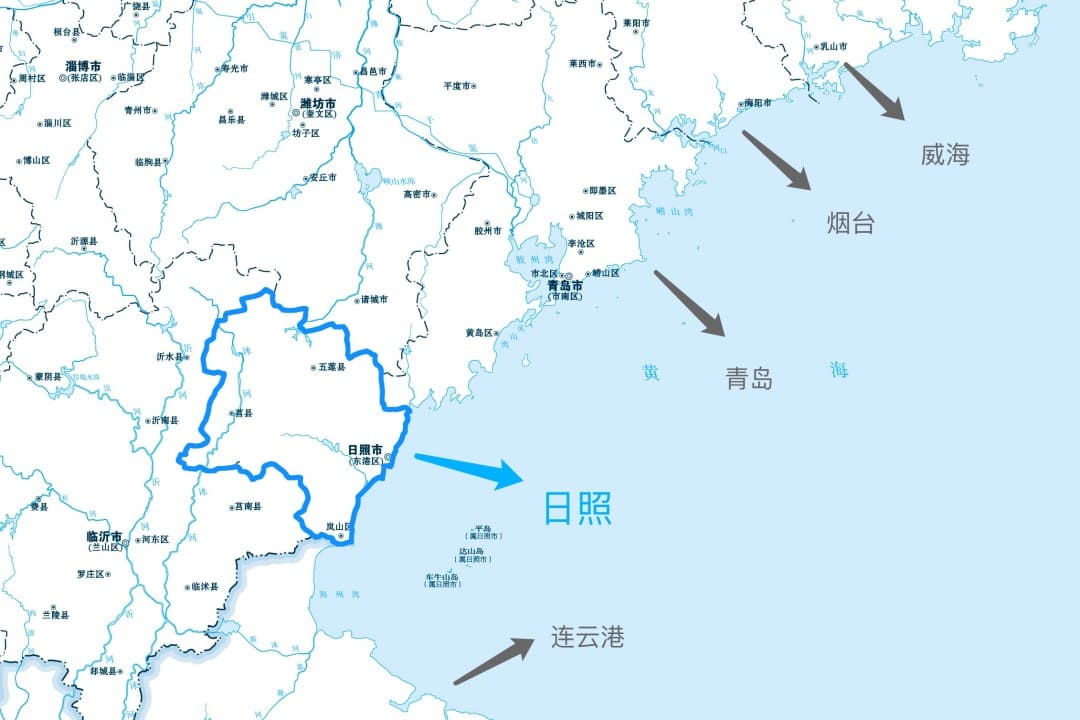
So, here’s the question: do you know where the most “seashore foraging hosts” are located?
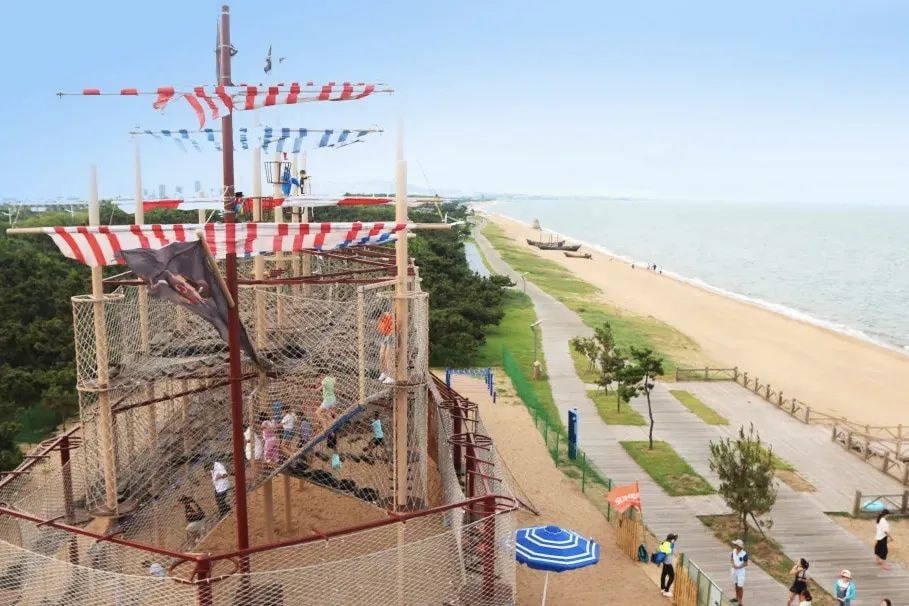
The first answer is Lianyungang in Jiangsu, and the second is Rizhao in Shandong.
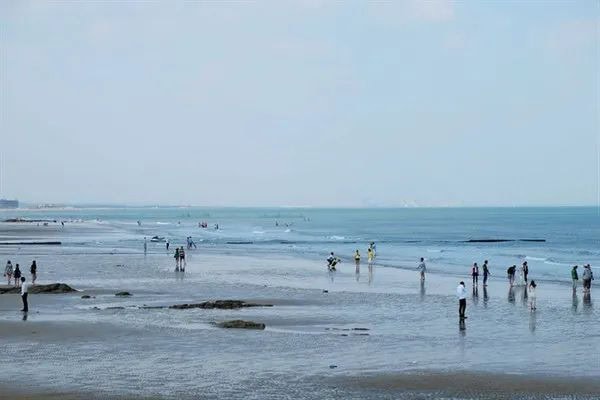
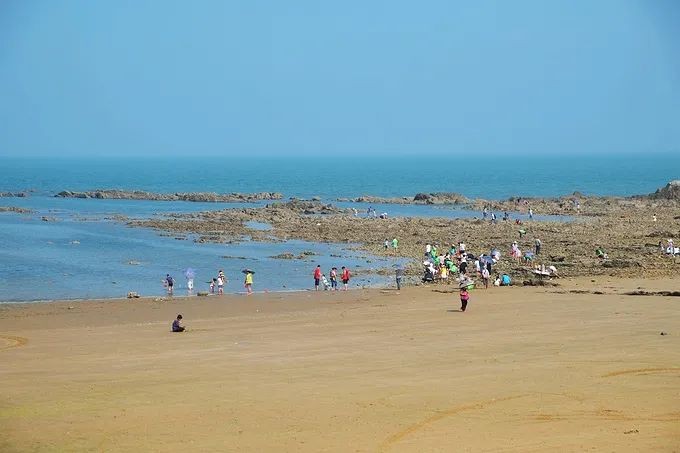
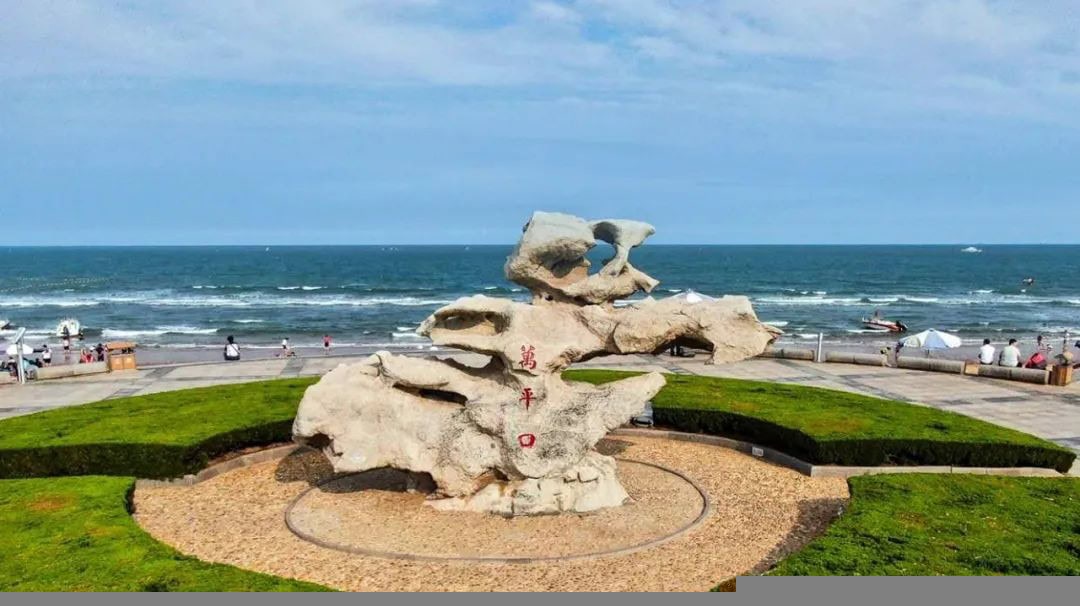
I haven’t been to Rizhao yet, so to avoid looking uninformed, I consulted my friend from Yantai, who surprisingly said, “I haven’t been there either, not very familiar with it.”
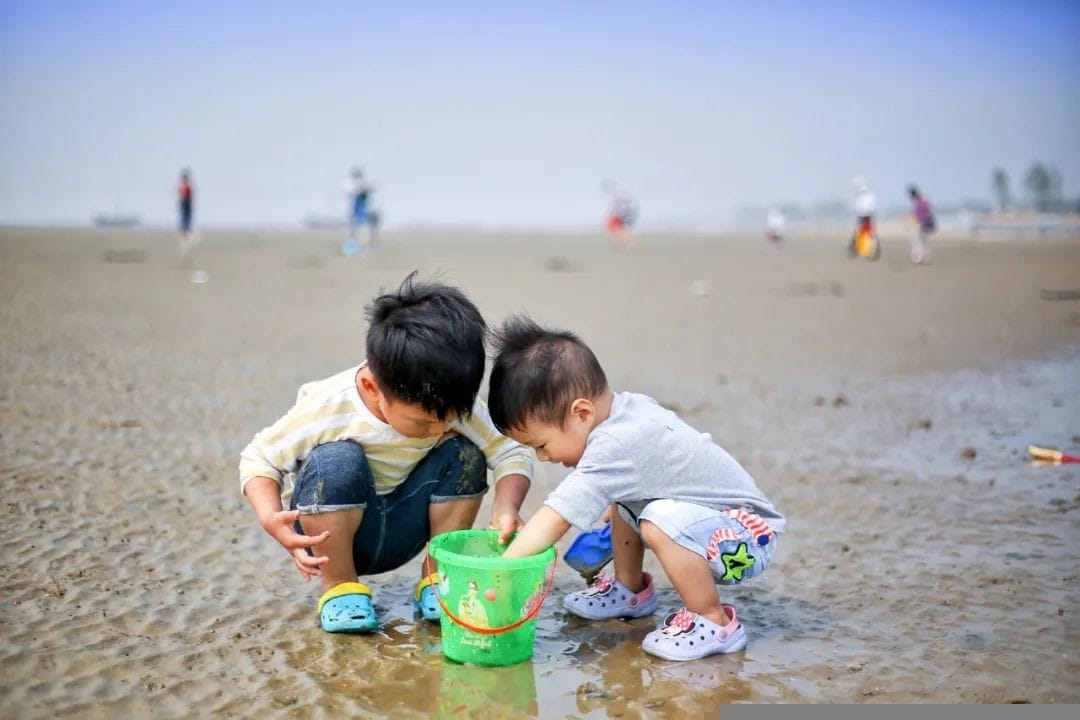
Relieved, it’s not just me; Rizhao is indeed quite low-profile.
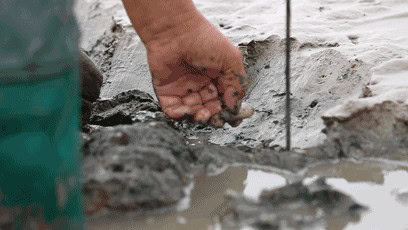
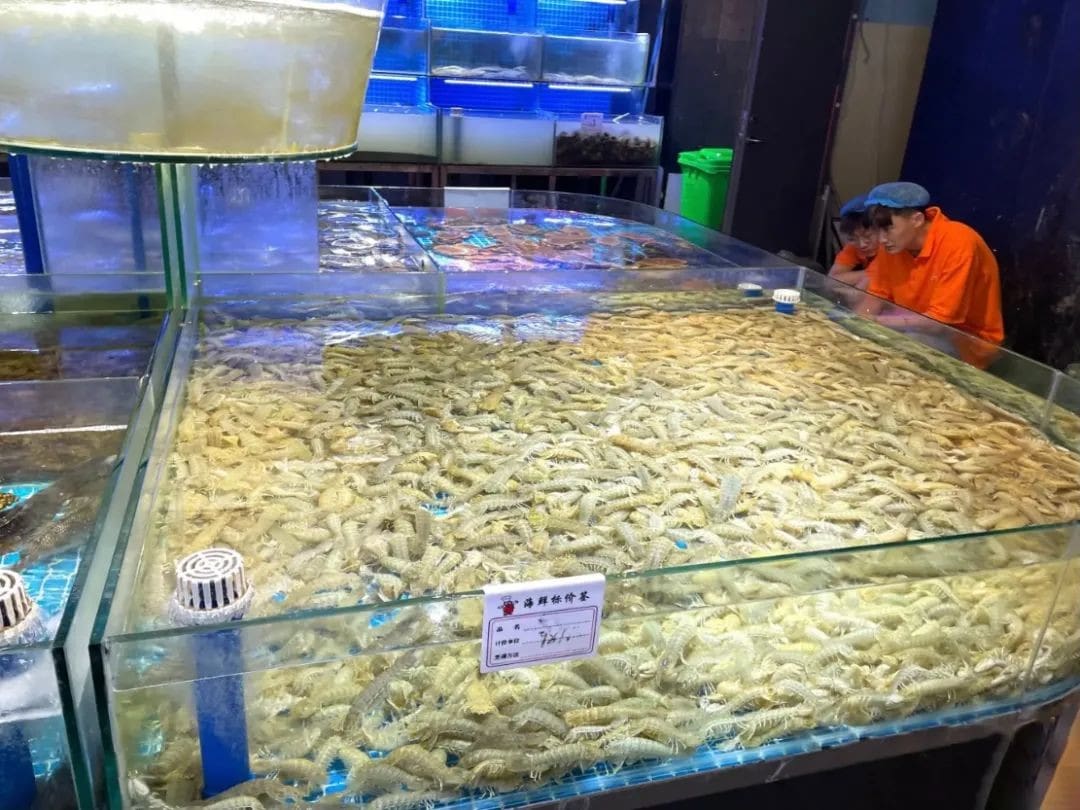
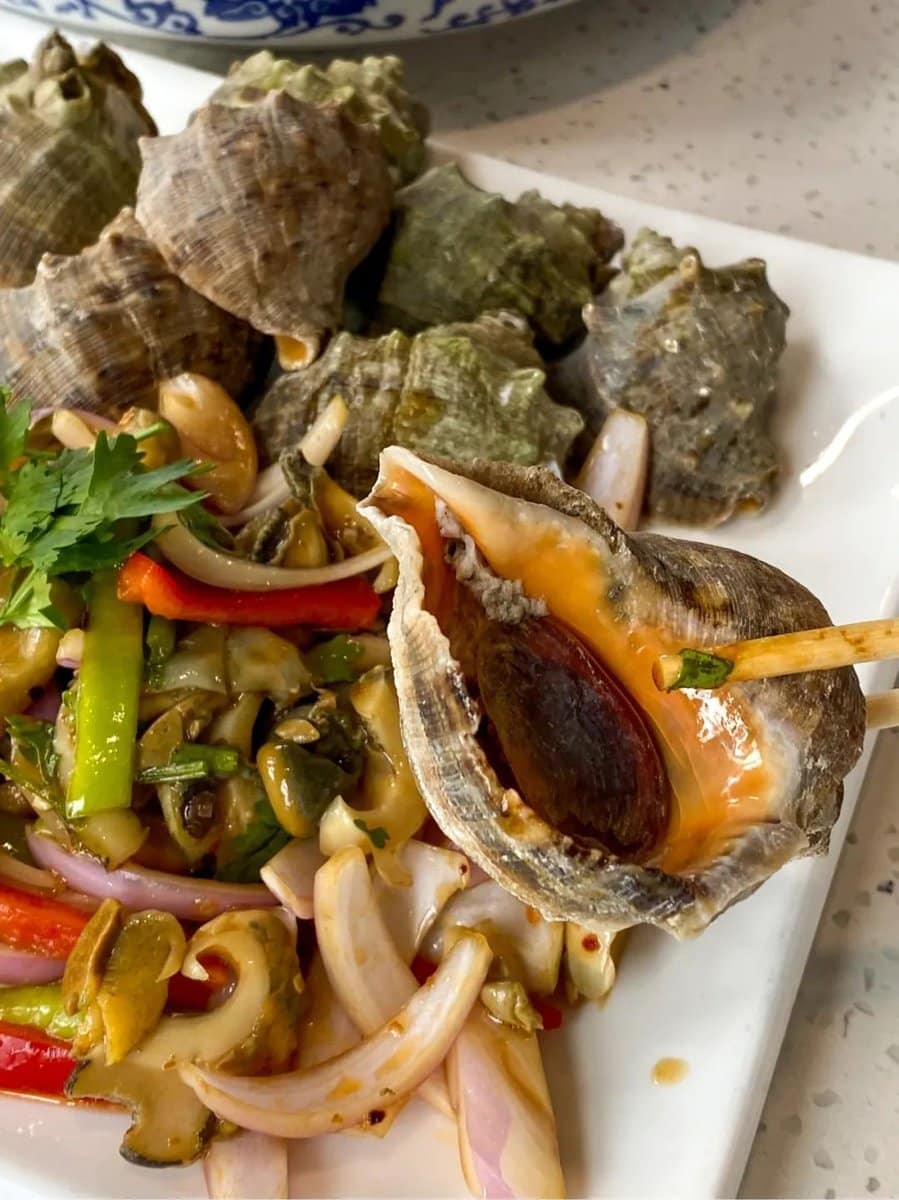
Even among Shandong natives, Rizhao is considered “not very noticeable.” Besides having the hardware conditions of both mountains and sea, Rizhao has a significant advantage: it boasts numerous and high-quality beaches.
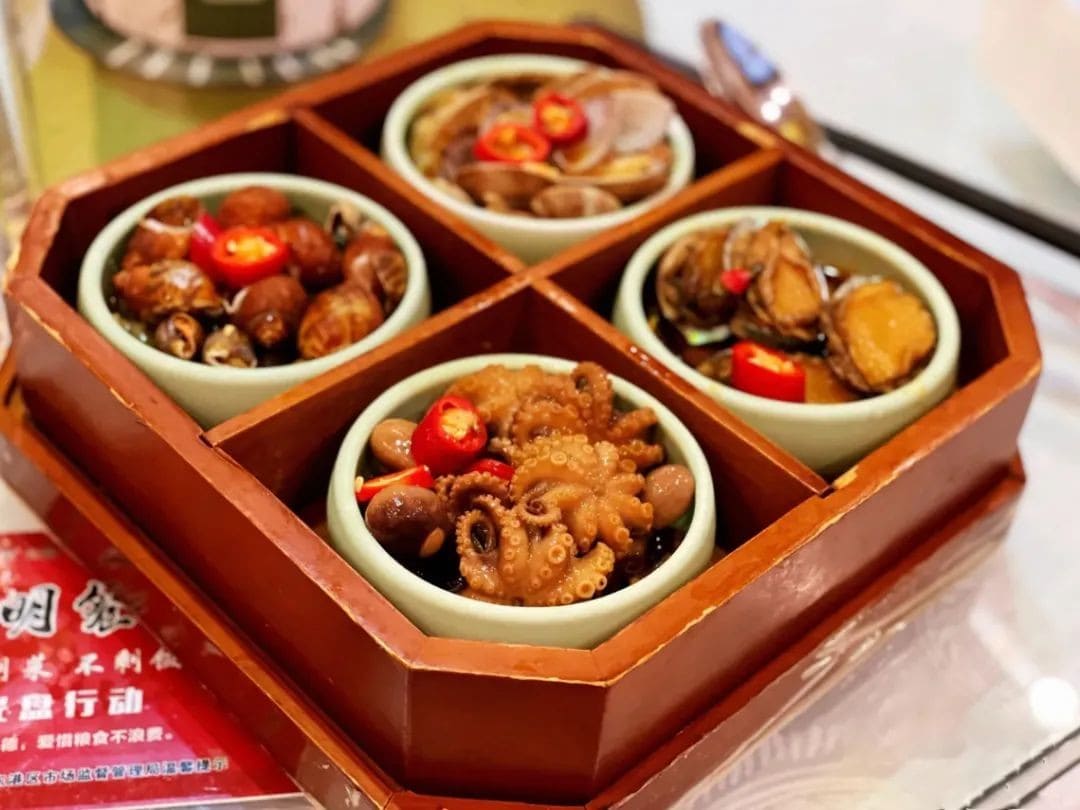
With various seashore foraging parks, it’s unreasonable that Rizhao isn’t mentioned more often as a destination suitable for family trips.
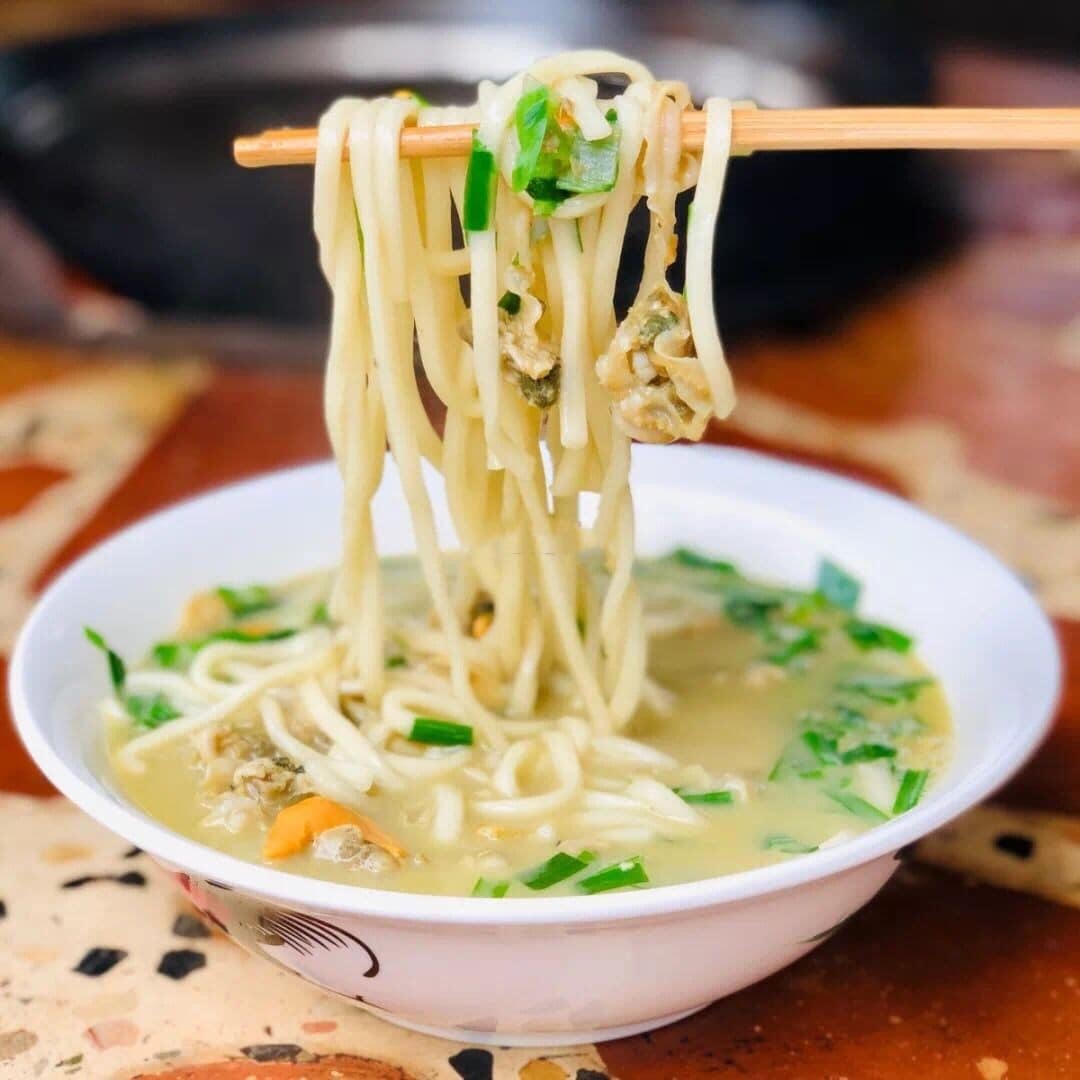
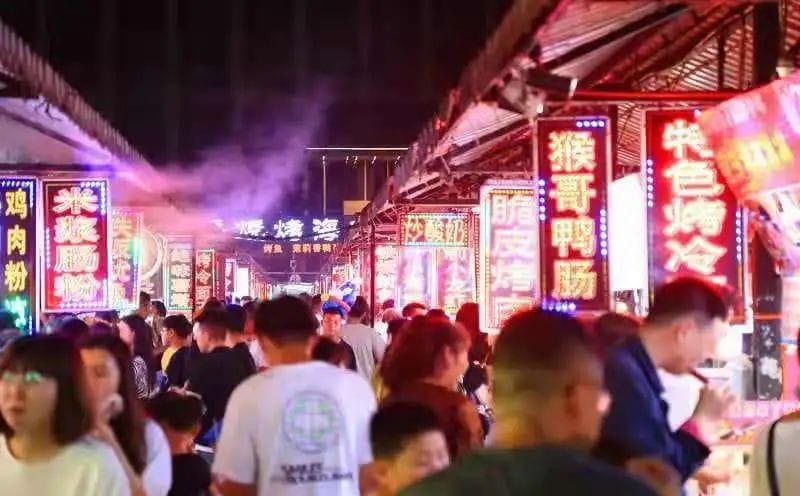
Image: @Hi Rizhao
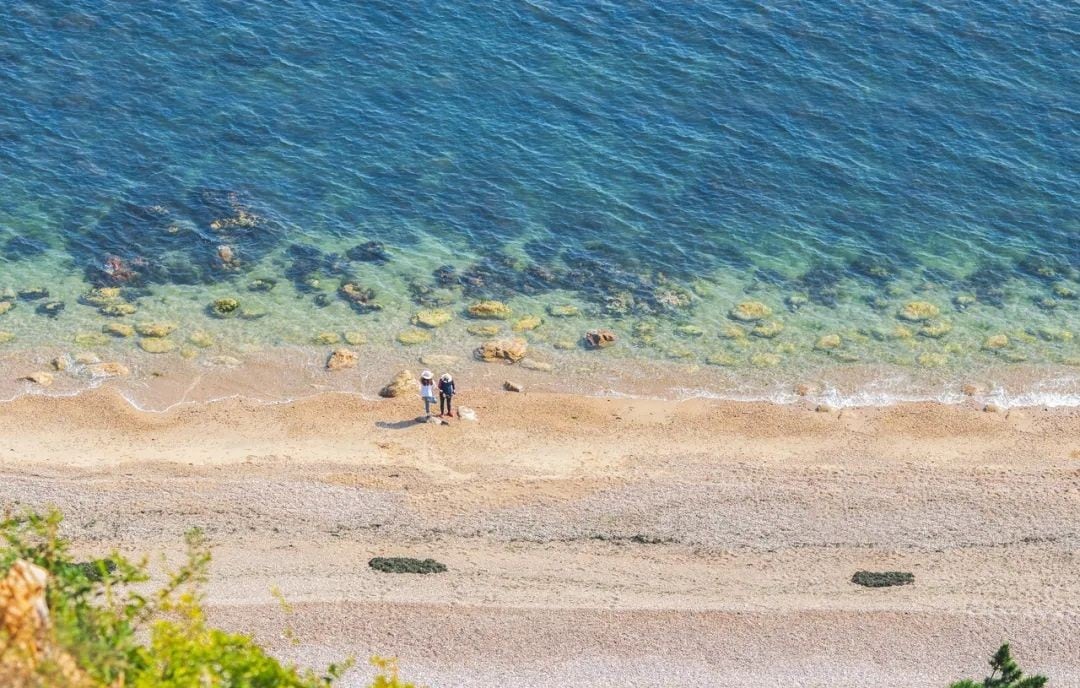
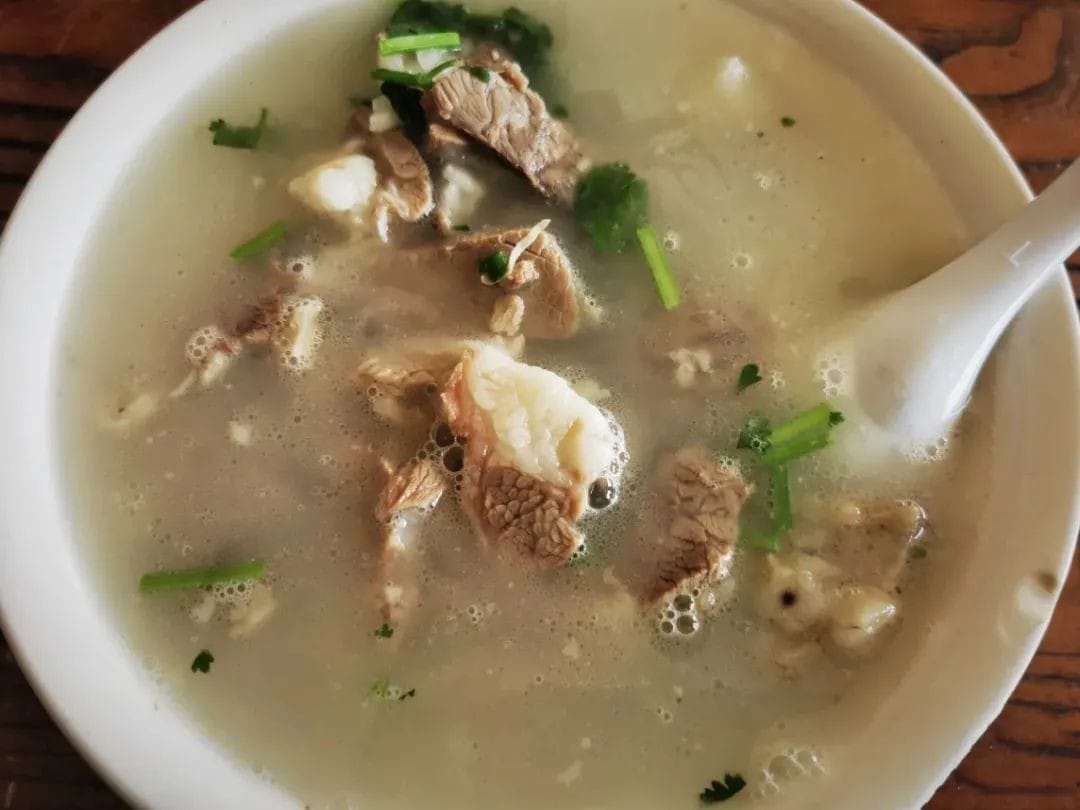
Moreover, Rizhao is only a 0.5-hour high-speed rail ride from Qingdao. A 2-day, 1-night trip is sufficient, or you can even make a day trip. Going to Rizhao specifically for seashore foraging is quite interesting.
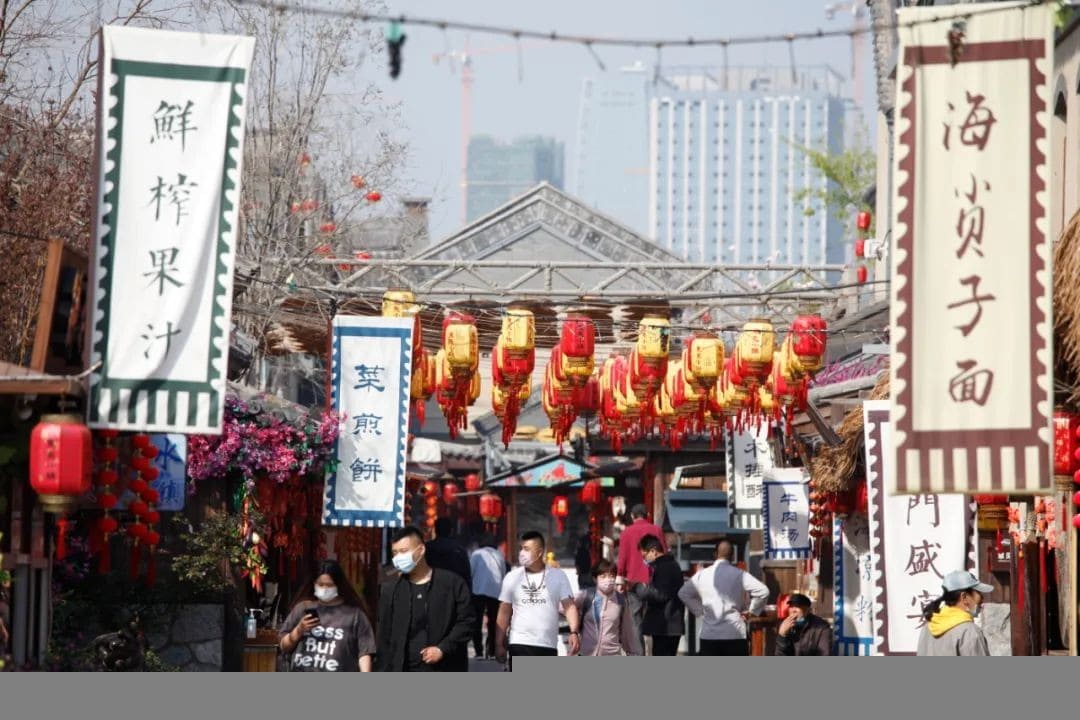
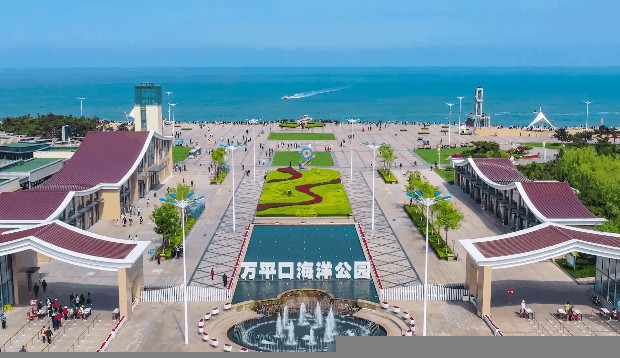
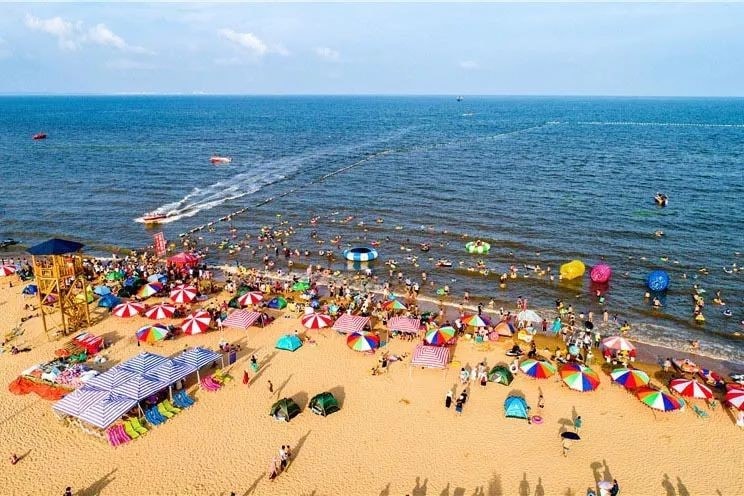
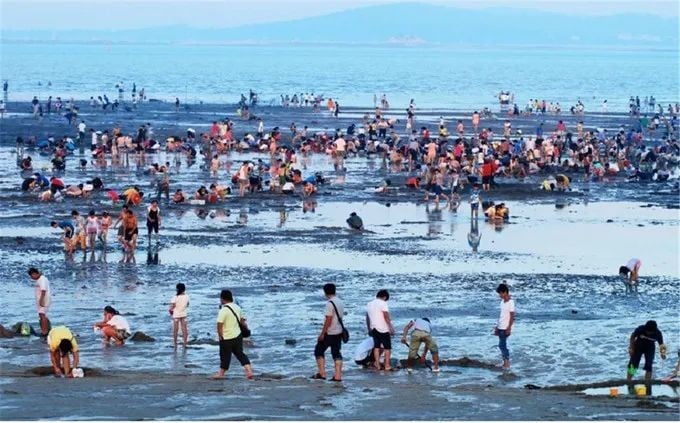
What is there to do in Rizhao?
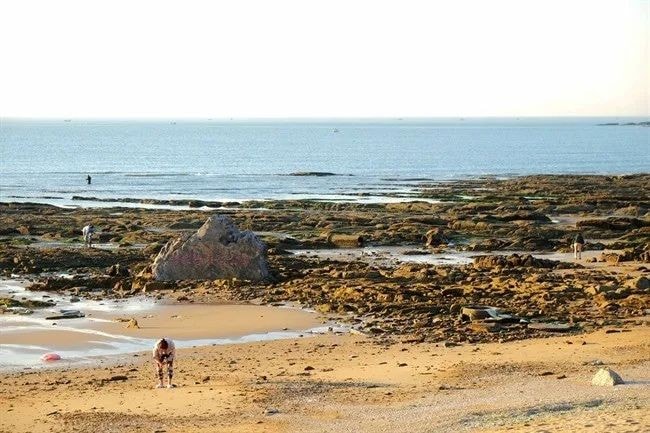
Beach resorts + seashore foraging parks, double the fun.
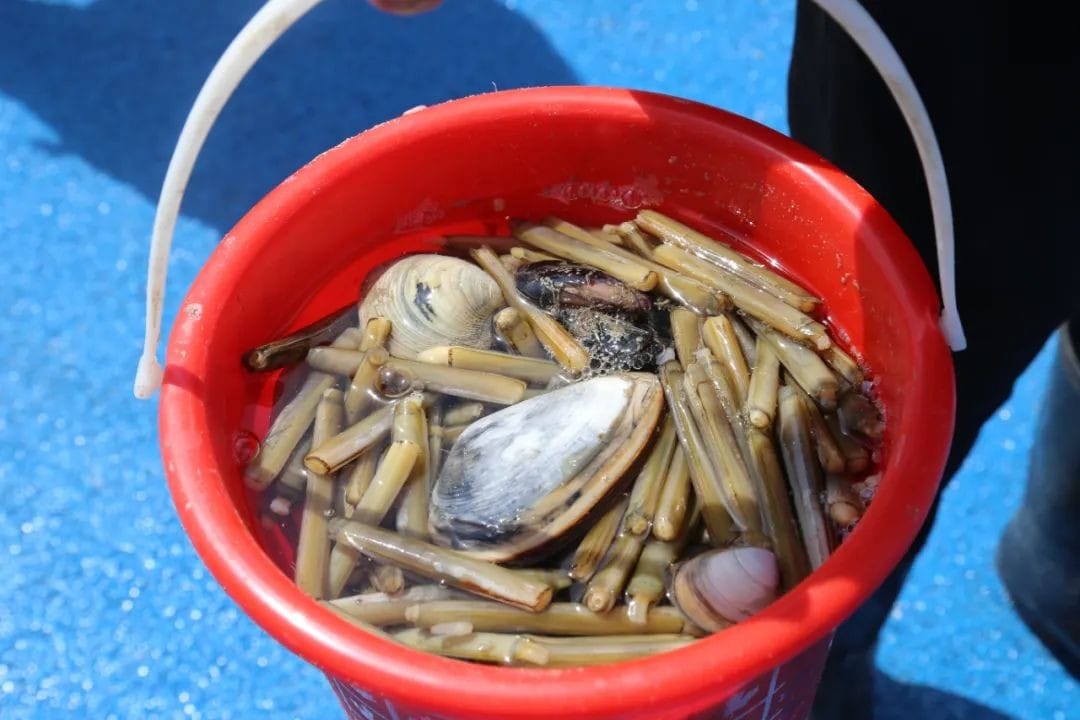
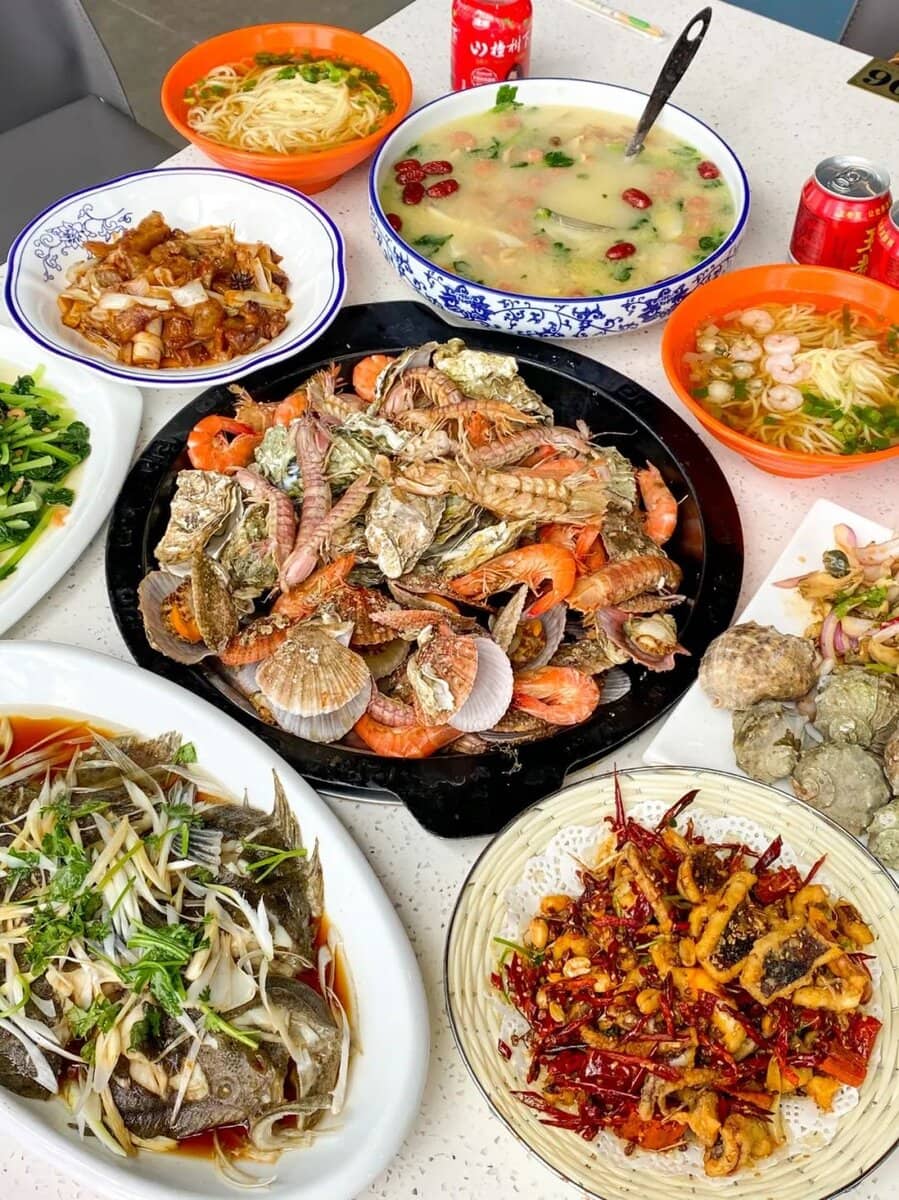
Like Yantai and Weihai, the attractions in Rizhao are all along the coast.
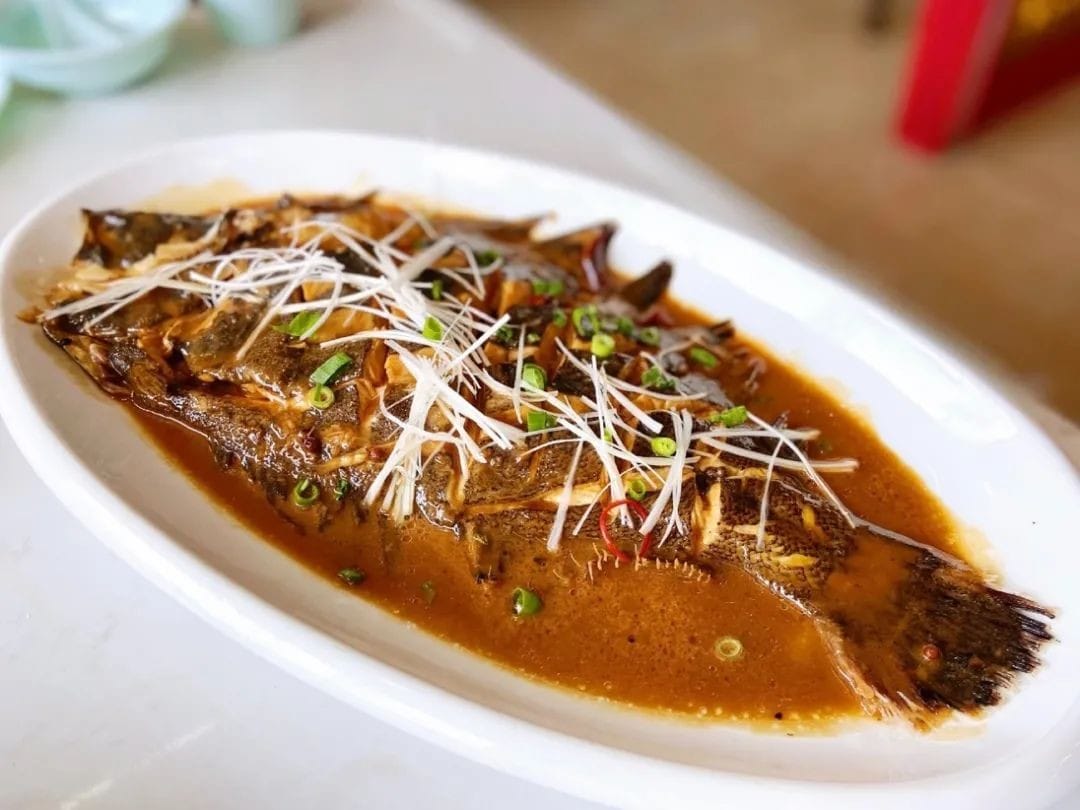
And what’s the advantage of Rizhao? The main urban area is very close to the sea, just about 3-4 km away. It’s as common as going to the supermarket to buy soy sauce to set up a tent on the beach with the family and enjoy seafood.
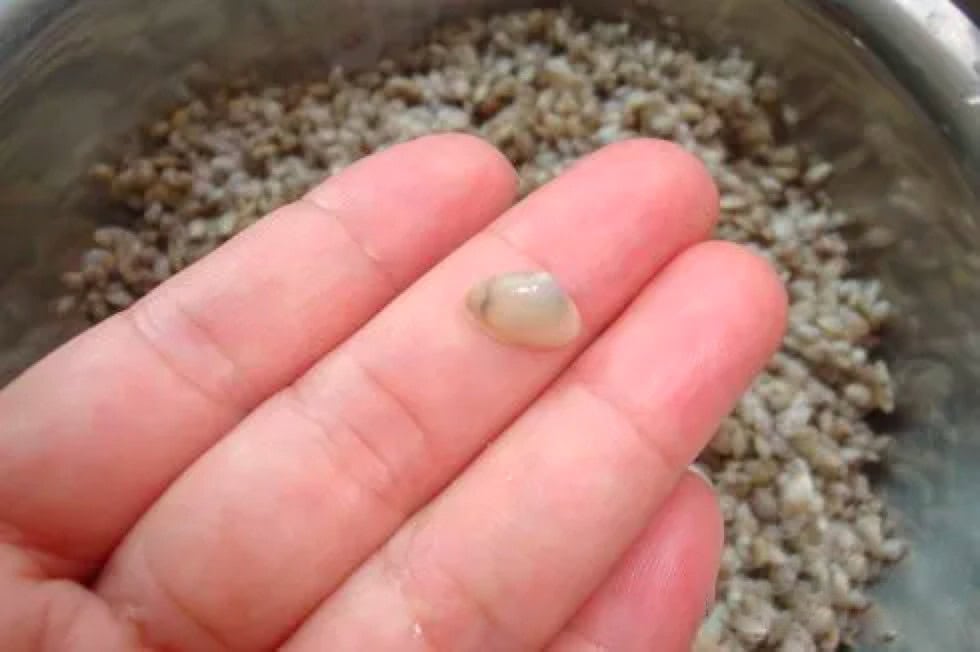
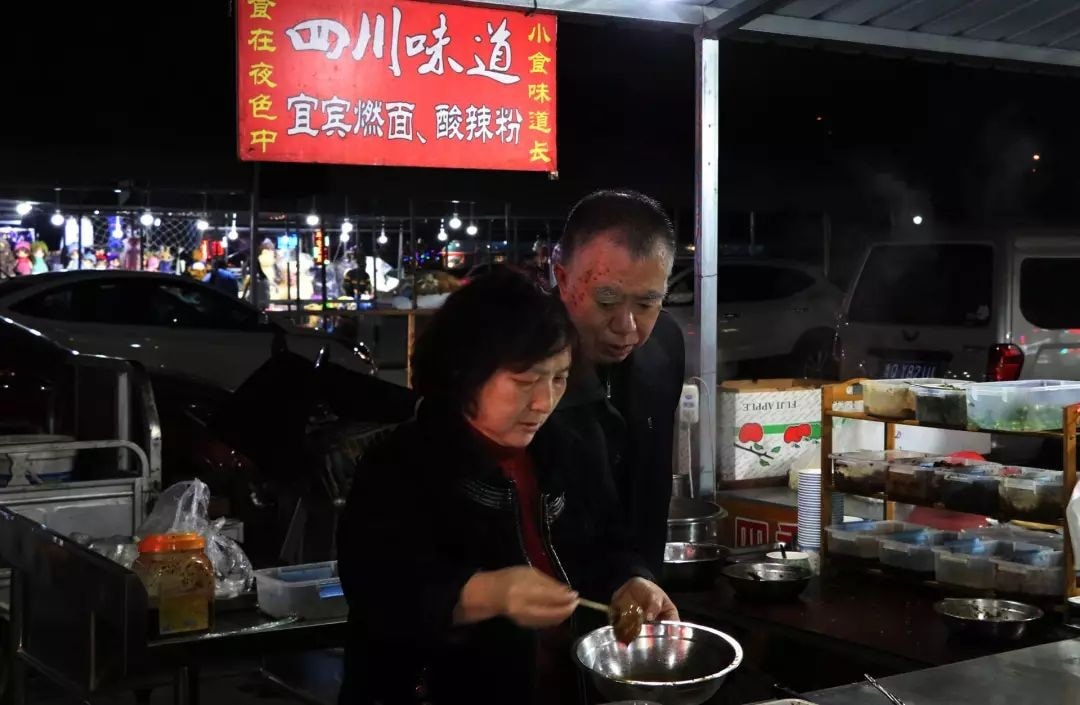
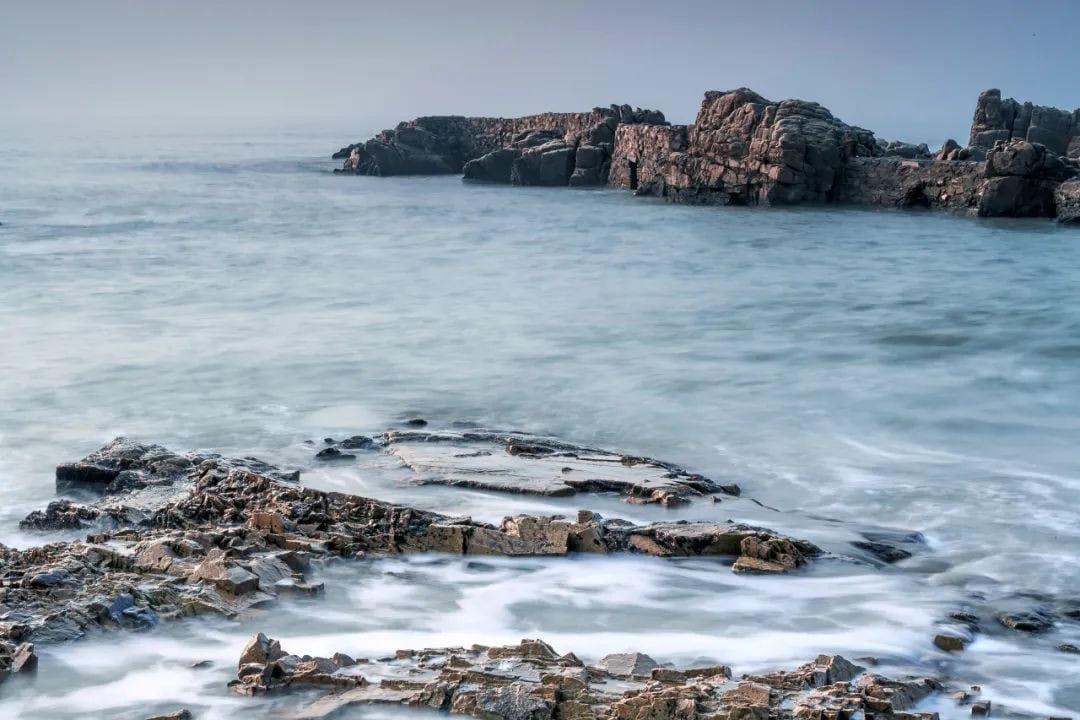
From the south at the Lighthouse Square to the north at the Forest Park, west along the Blue Sea Road, and east to the sea, this coastal area is called “Rizhao’s Sunshine Coast,” the core of Rizhao’s tourism, with extremely high density of attractions.
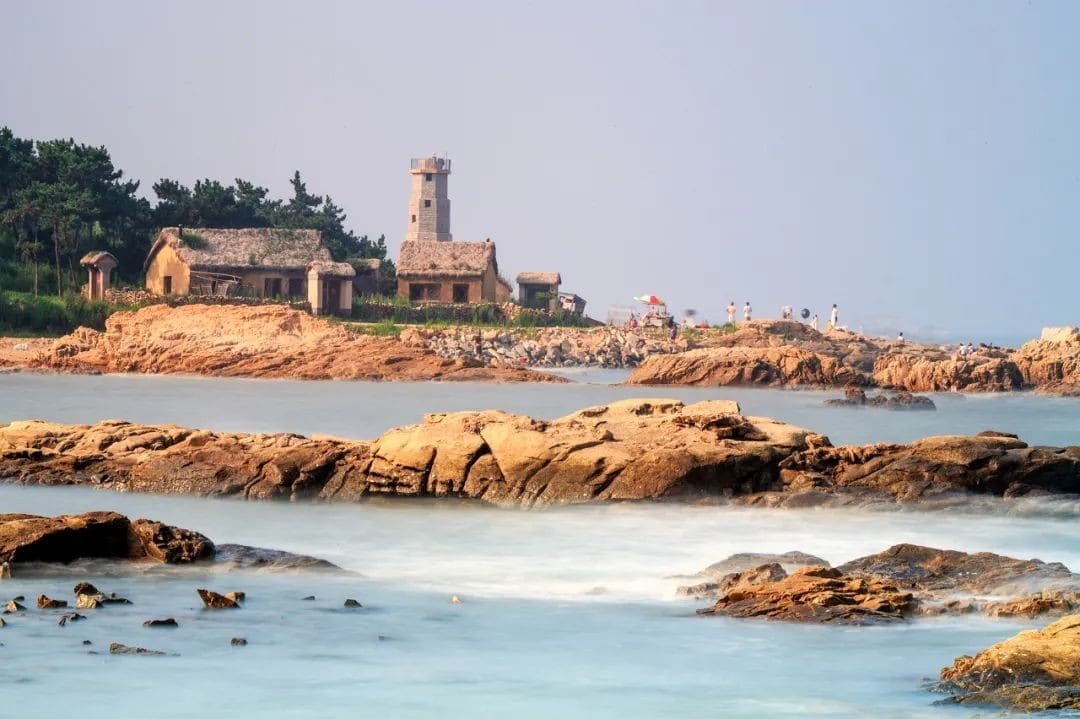
I roughly marked the main attractions on the map, which can serve as a general orientation reference. Of course, the scale is arbitrary.
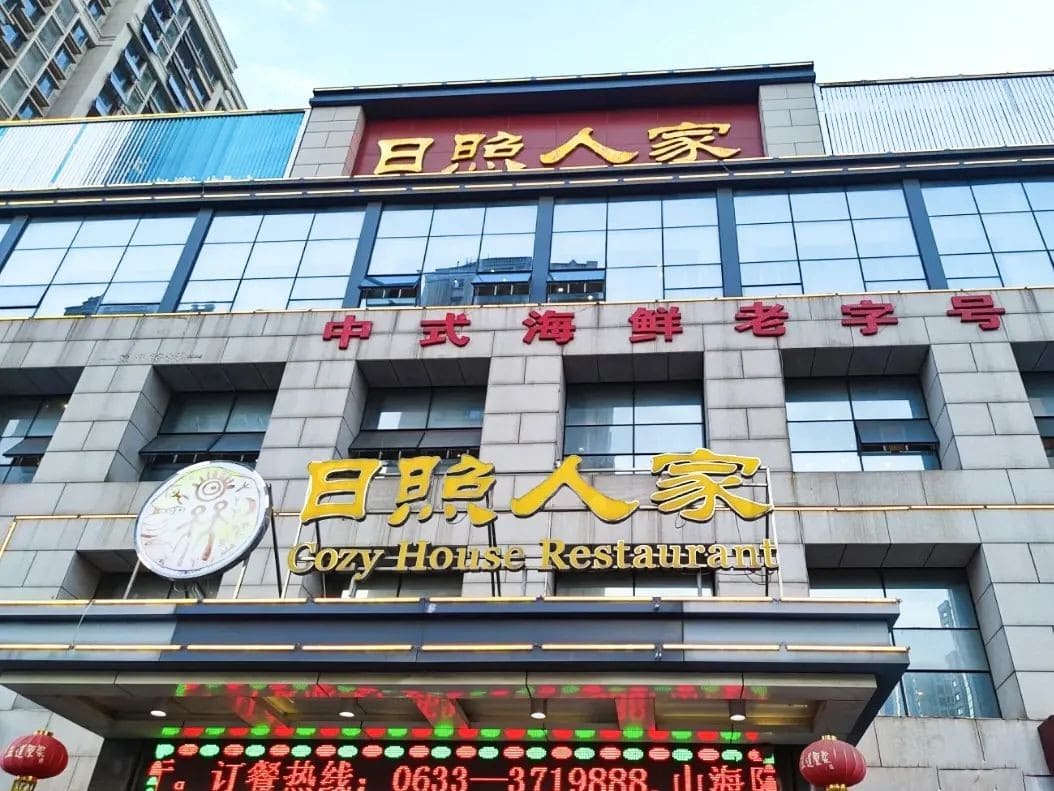
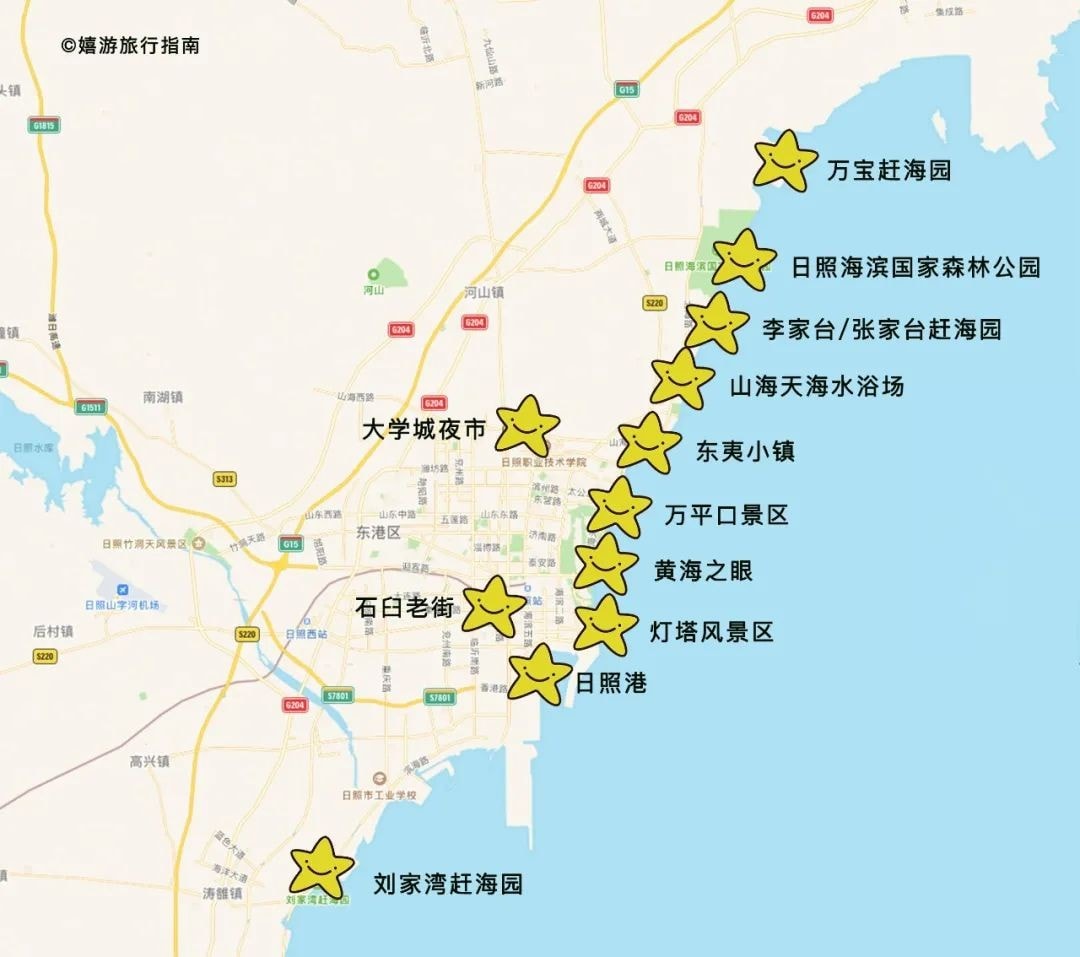
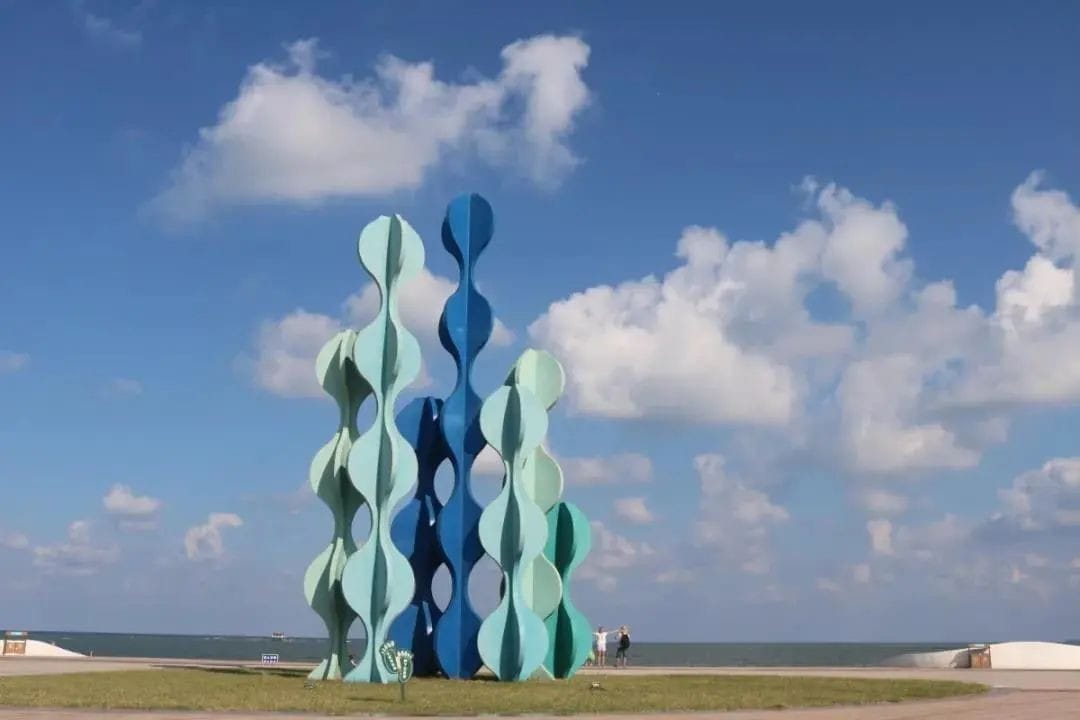
In Rizhao, there are two main options for enjoying the sea: beach resorts and seashore foraging parks.
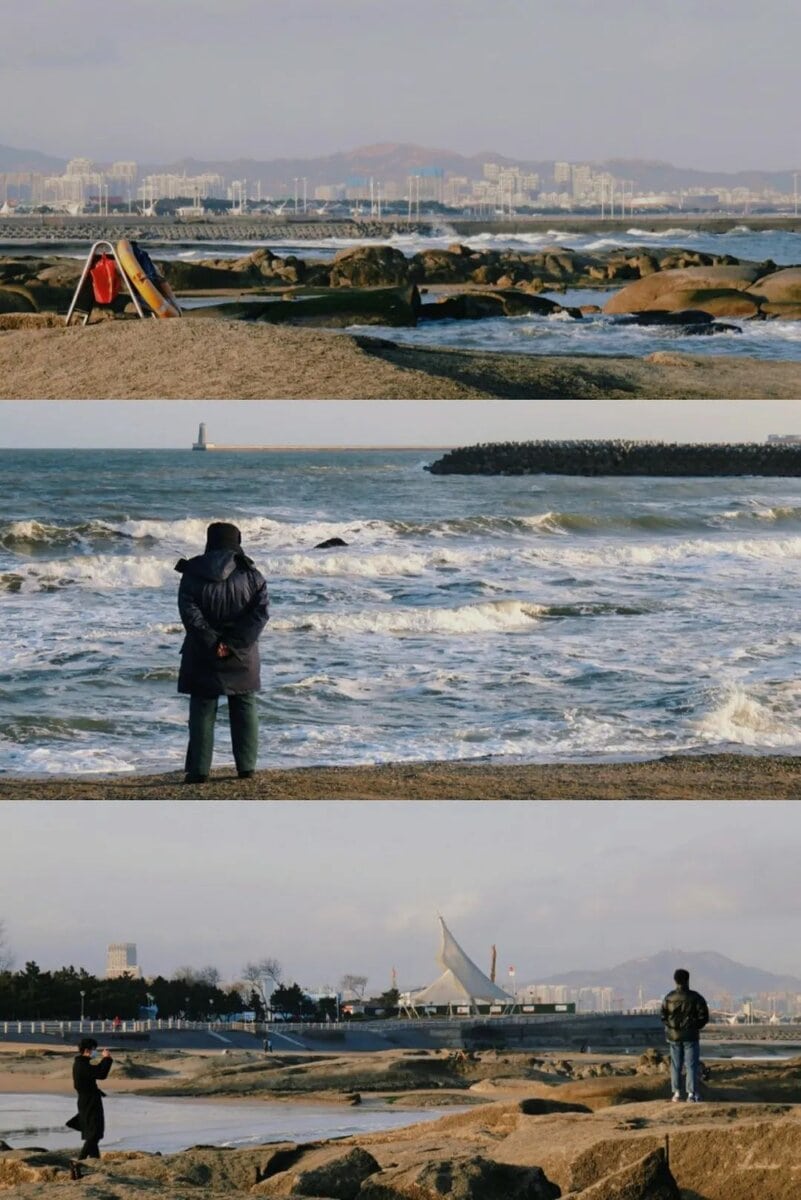
The main beach resorts include three: the Second Beach Resort (Wanpingkou), the Third Beach Resort (Shanhaitian), and the Fourth Beach Resort (National Forest Park).
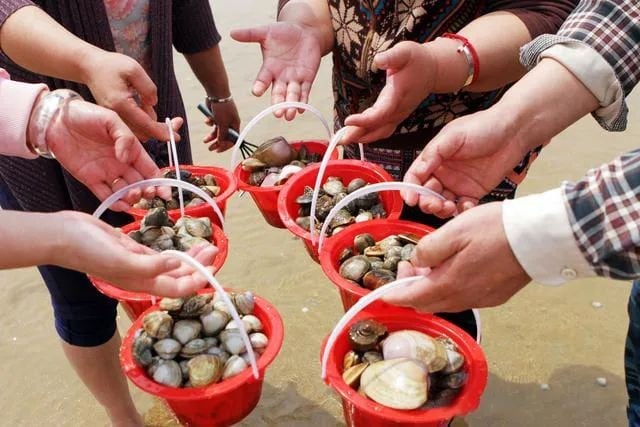
Starting last year, all three beach resorts have been open to the public for free.
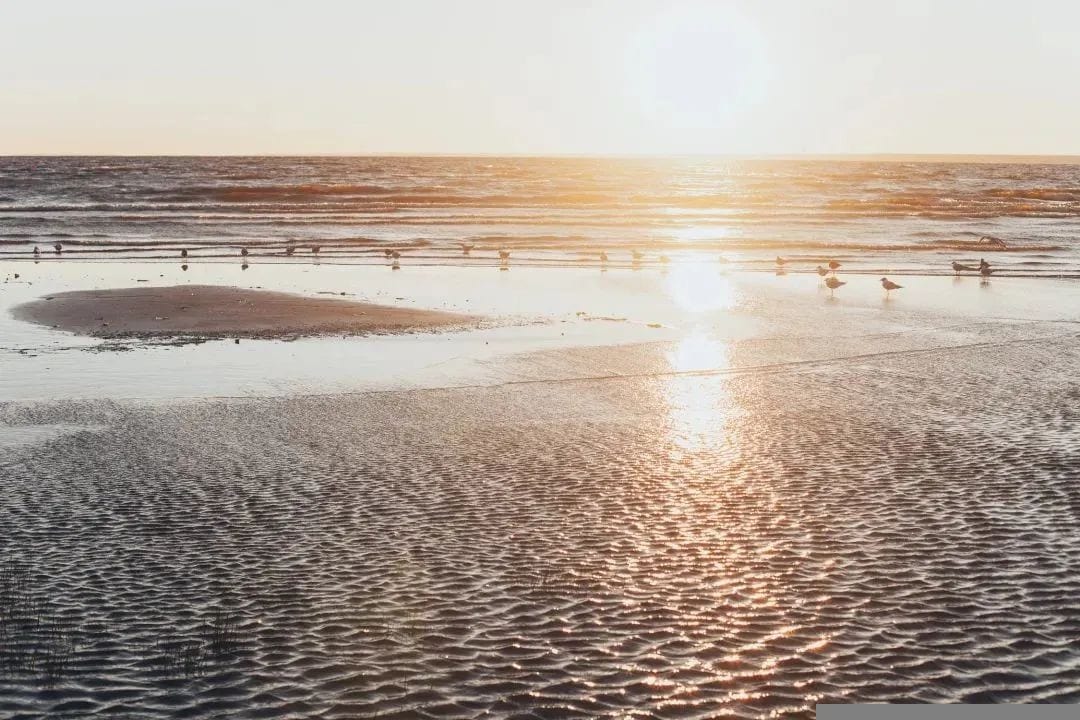
When it comes to a combination of scenic beauty and amenities, Wanpingkou and the National Forest Park are the most recommended, although they cater to slightly different preferences.
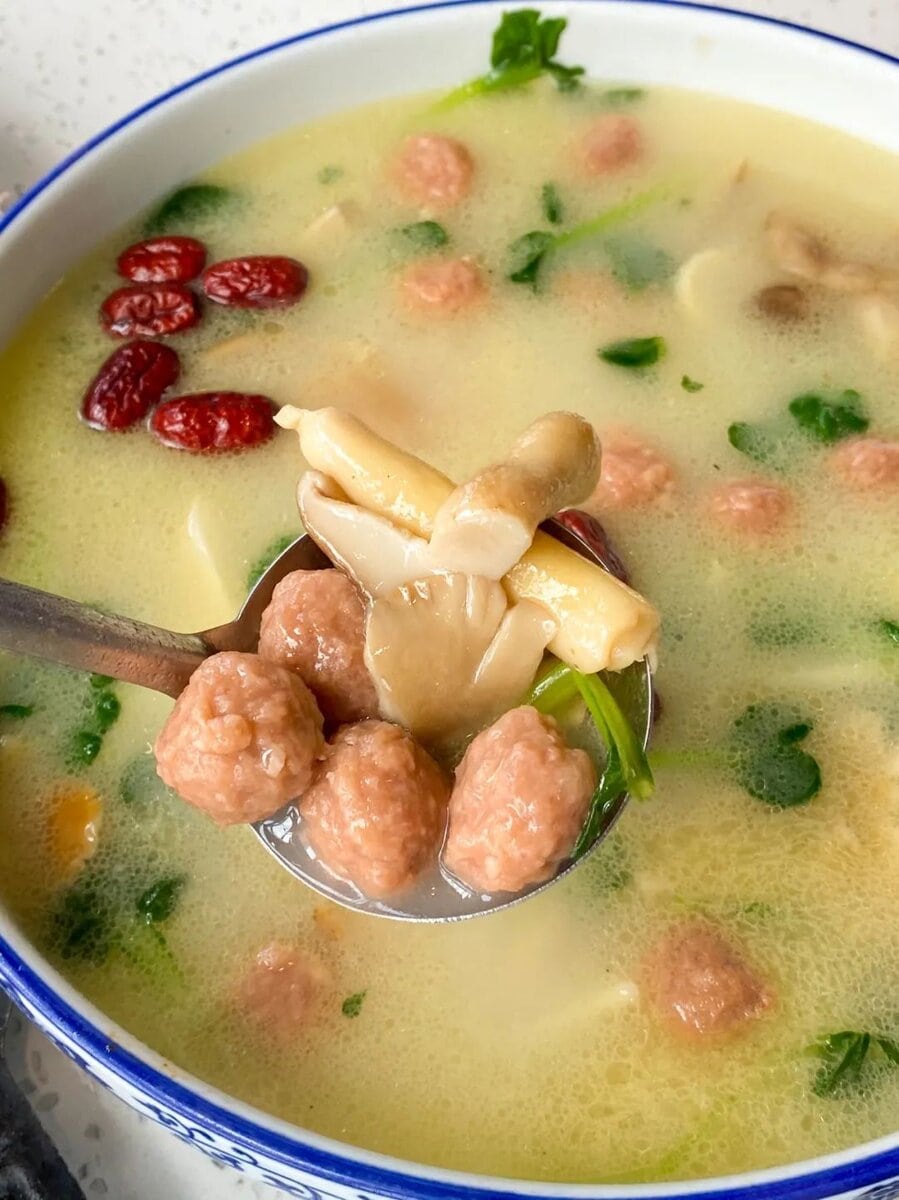
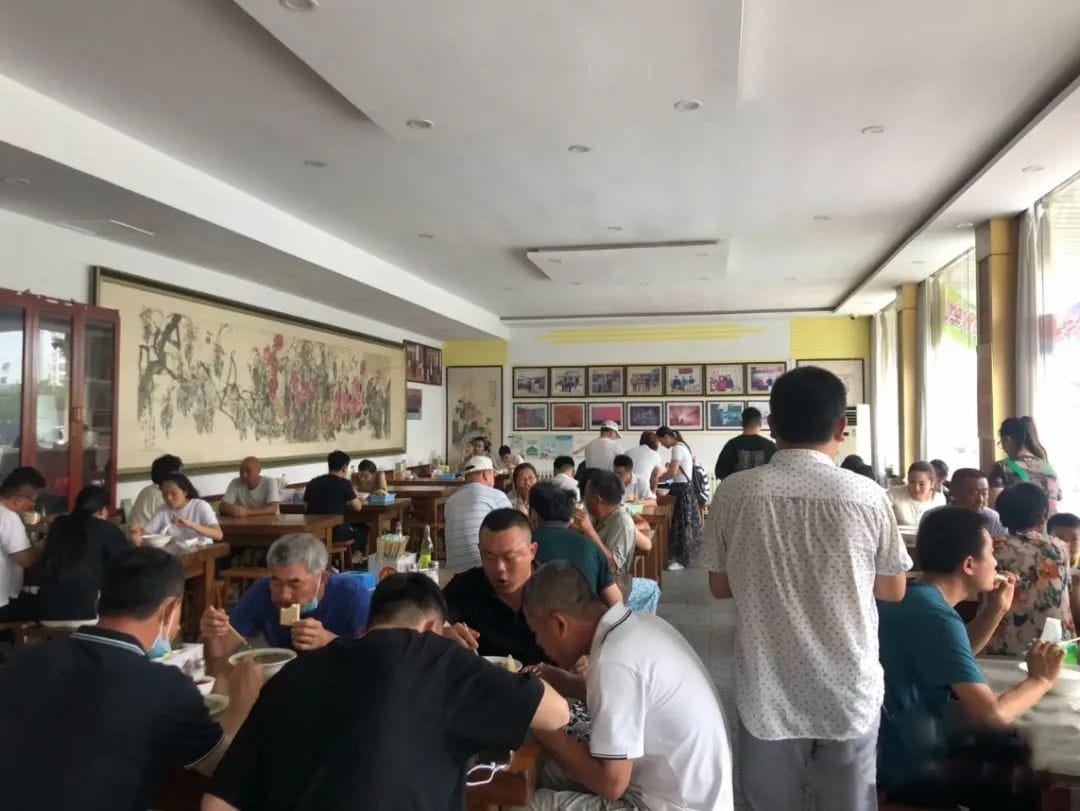
**Wanpingkou**
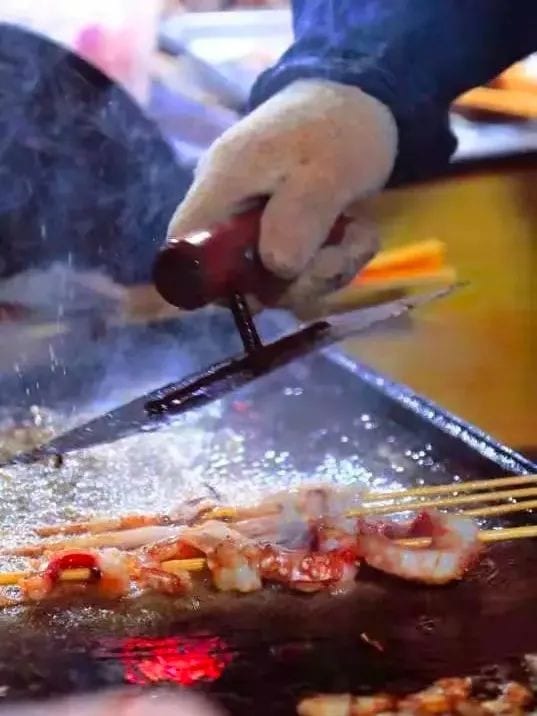
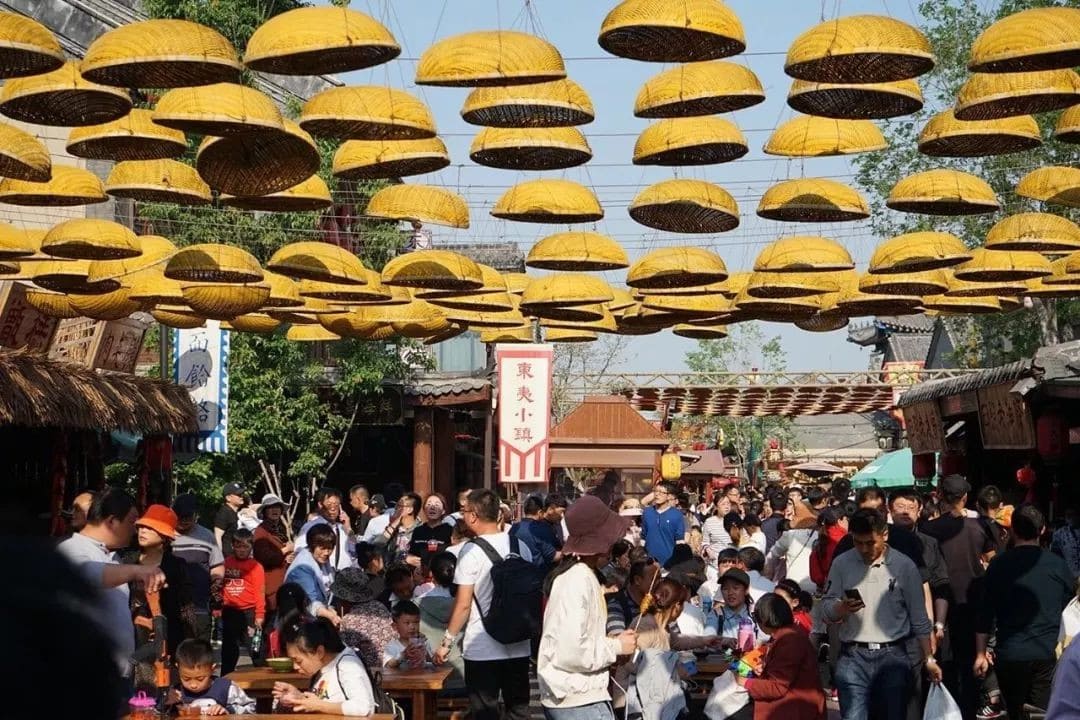
Wanpingkou Seaside Scenic Area offers a conventional seaside resort setup, featuring a 4.2 km coastline and 300,000 sqm of sandy beach, providing plenty of activities.
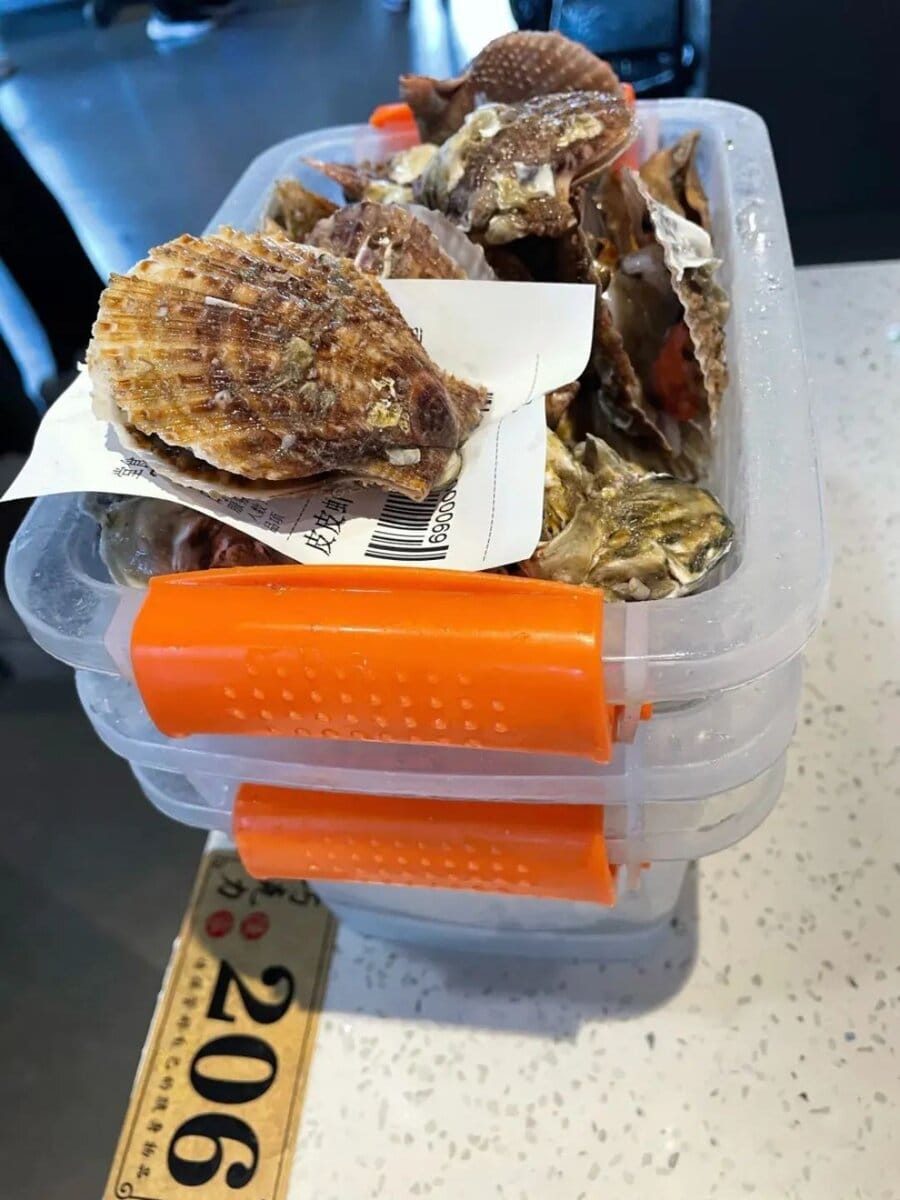
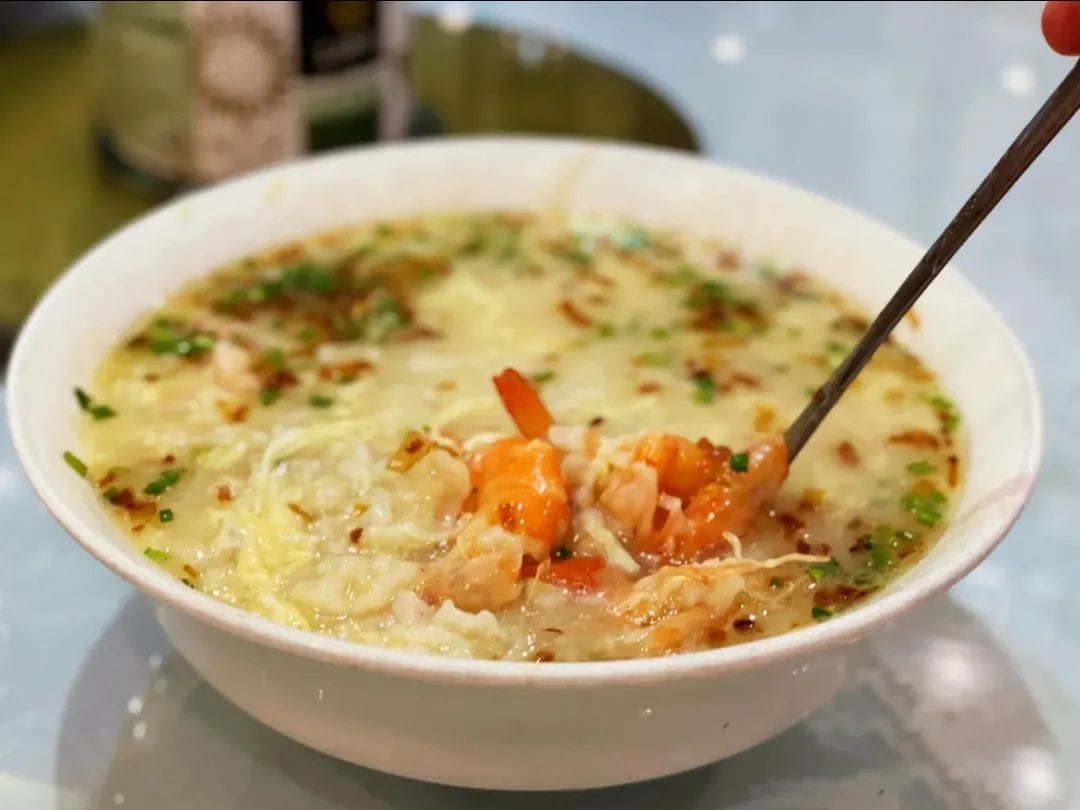
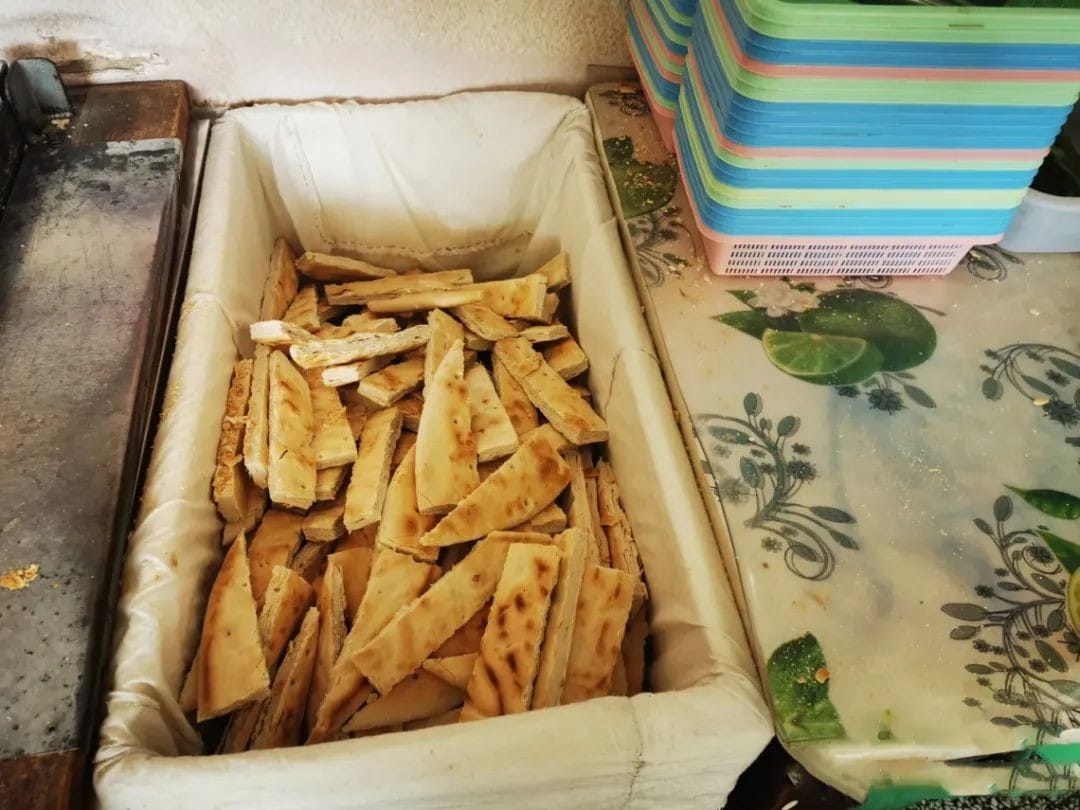
Wanpingkou has five entrances, and due to its vast size, choosing the wrong entrance could lead to a considerable detour.
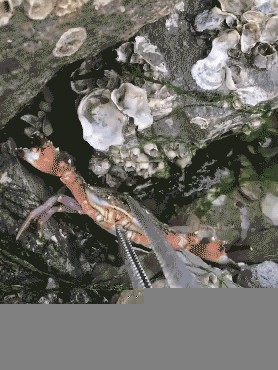
Entrances 1 and 2 are ideal for heading straight to the beach and engaging in various recreational activities, making them popular choices for locals to spend weekends with their families.
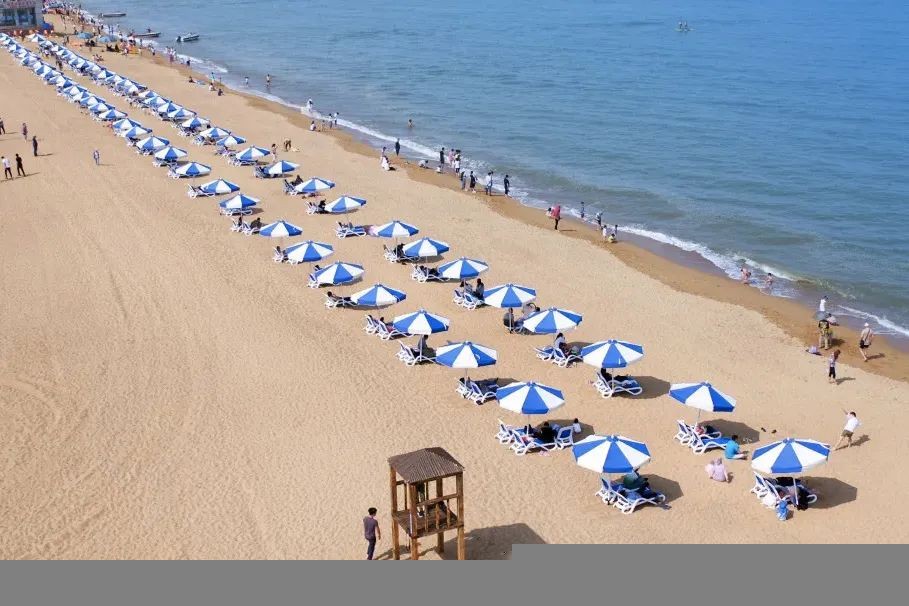
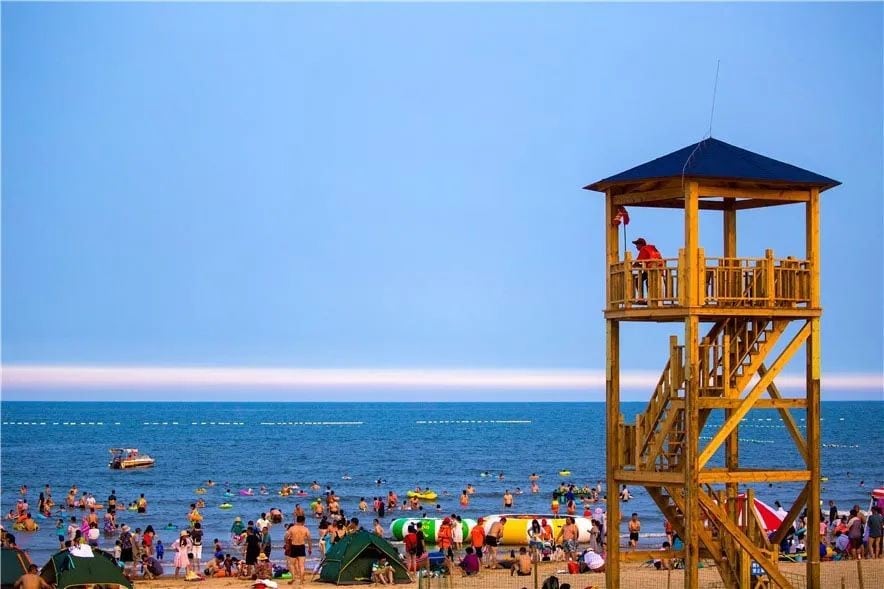
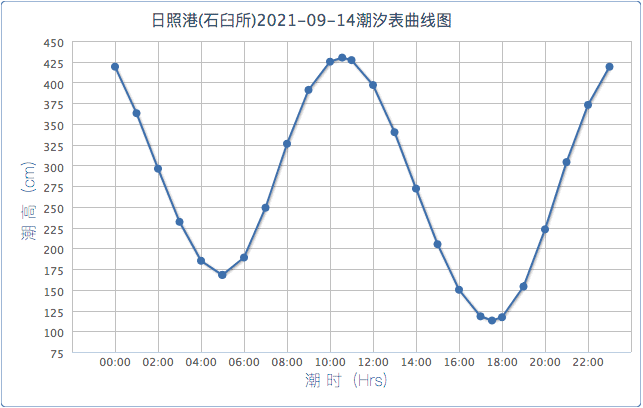
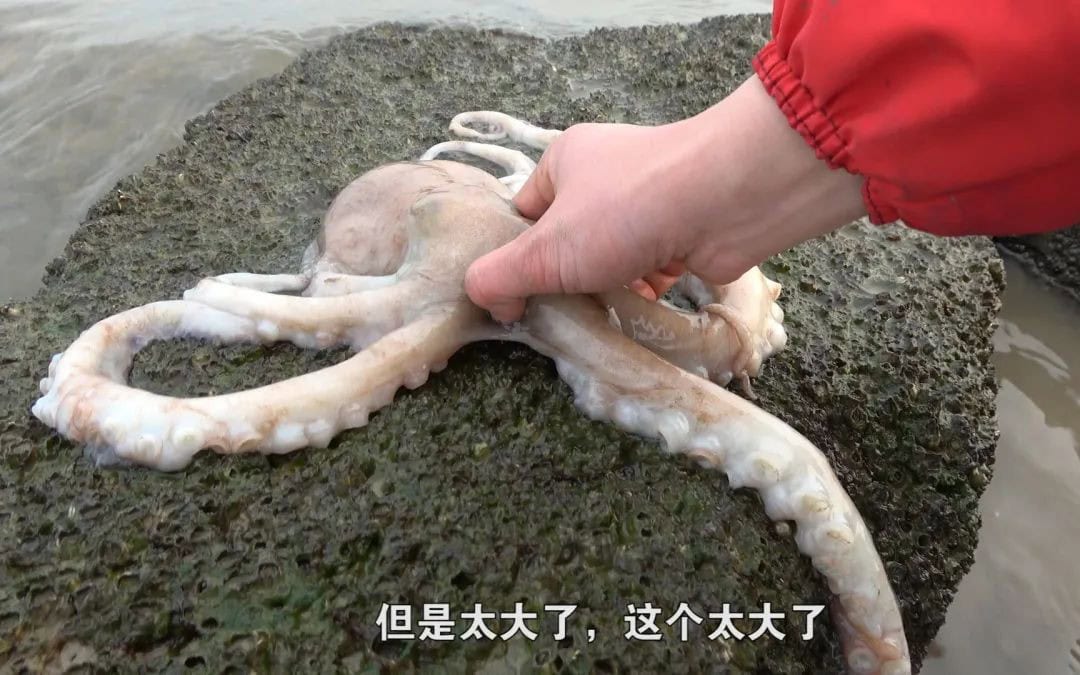
Tourists like myself typically enter through Gate 3, which offers several photo opportunities along the way, including spots frequented by wedding photographers, extending all the way to the beach.
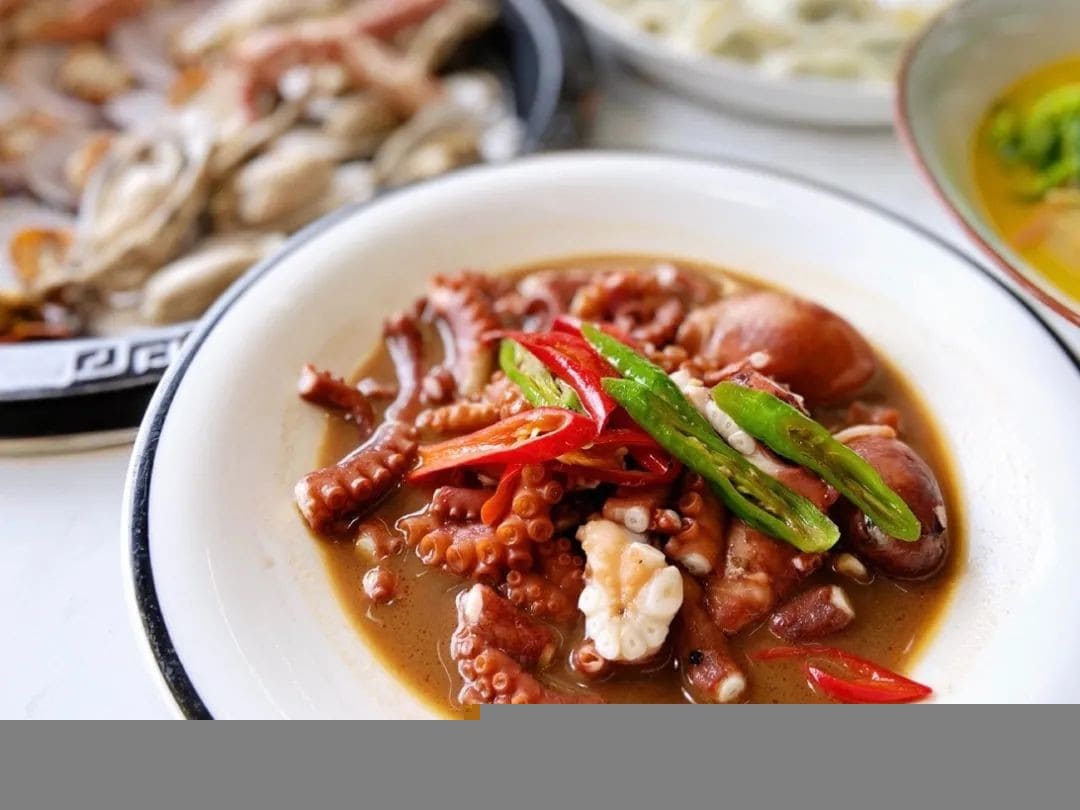
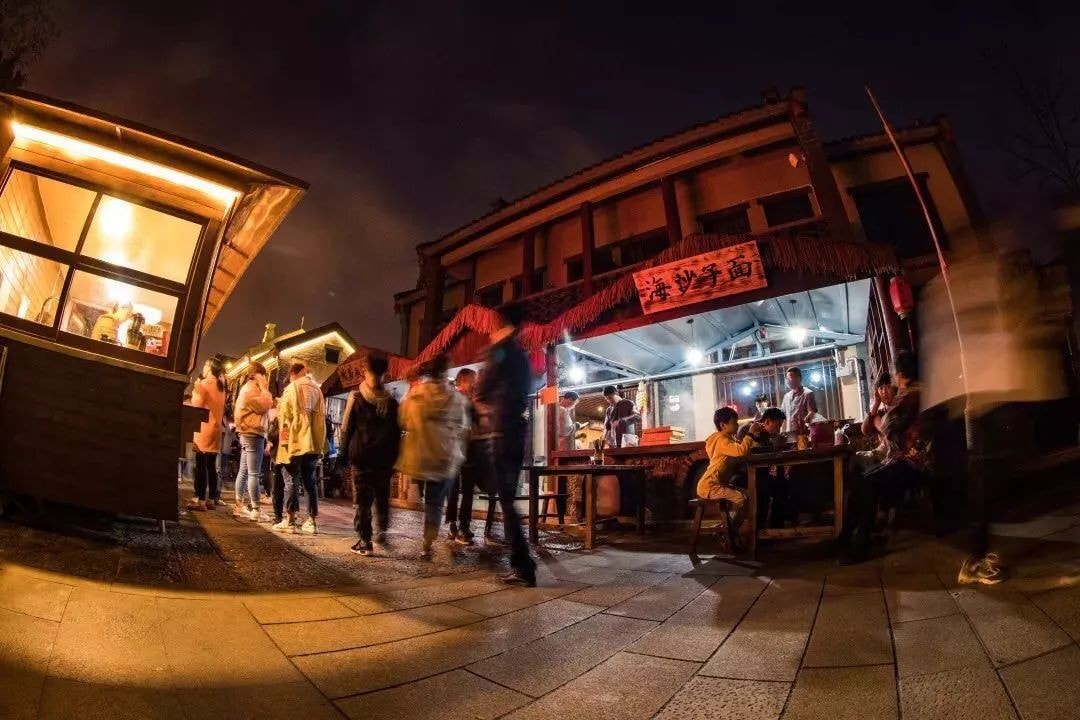
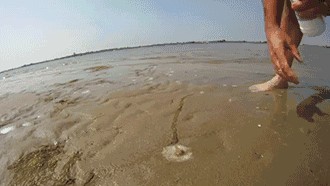
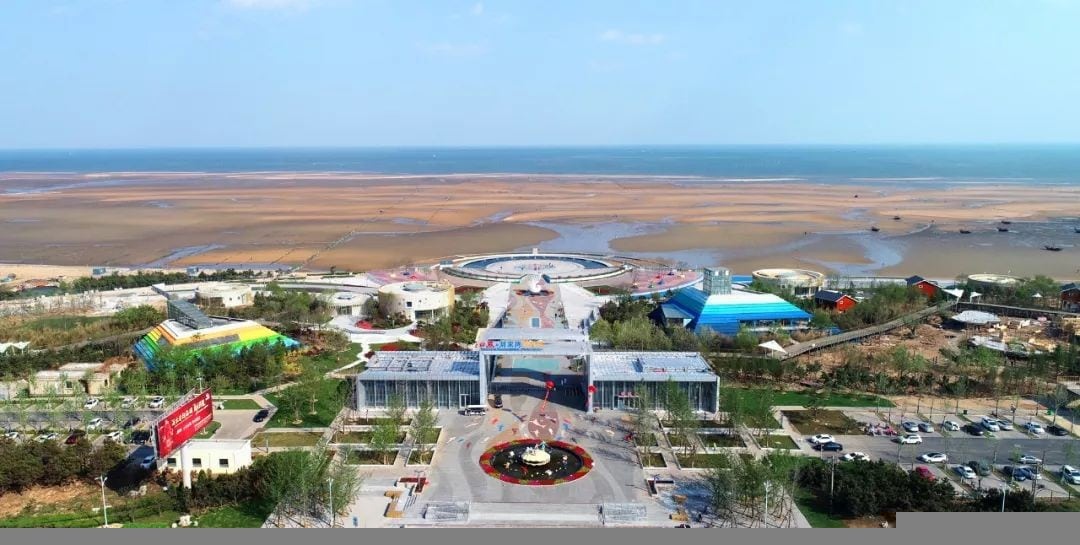
Gate 4 provides the most convenient access to Rizhao Ocean Park, Dongyi Town, and hotels within the resort area.
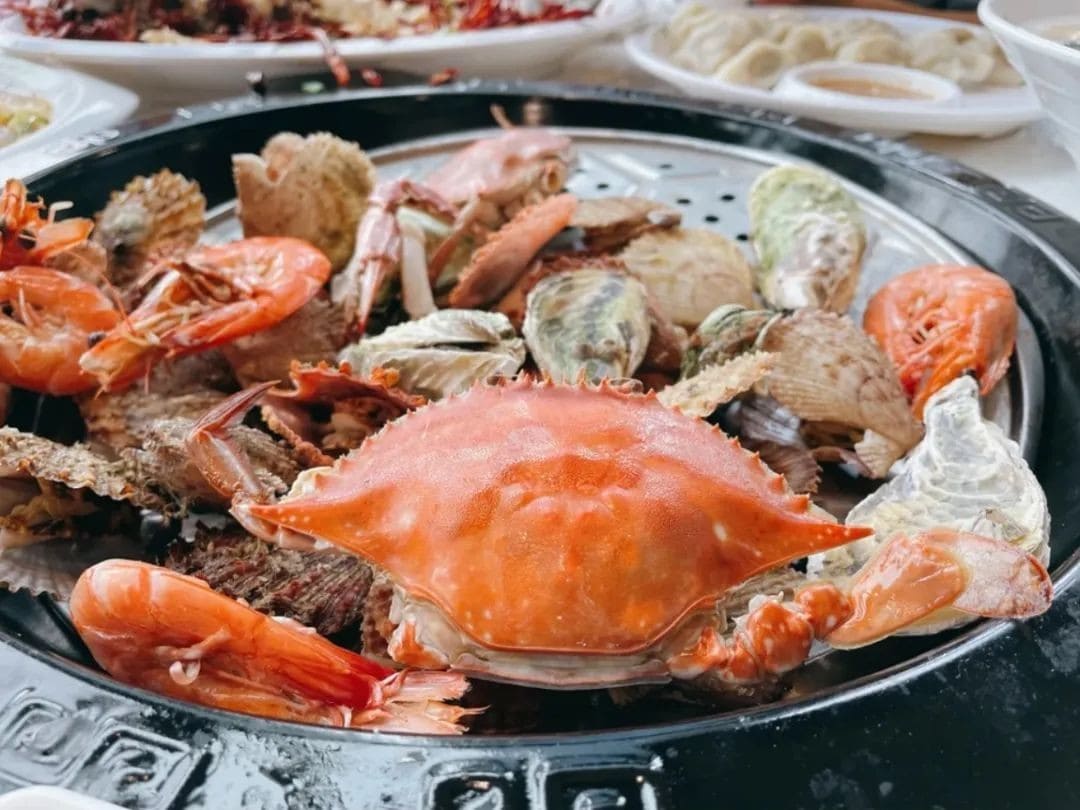
Dongyi Town is a typical ancient-style food street found in many cities, fully commercialized but not overly touristy.
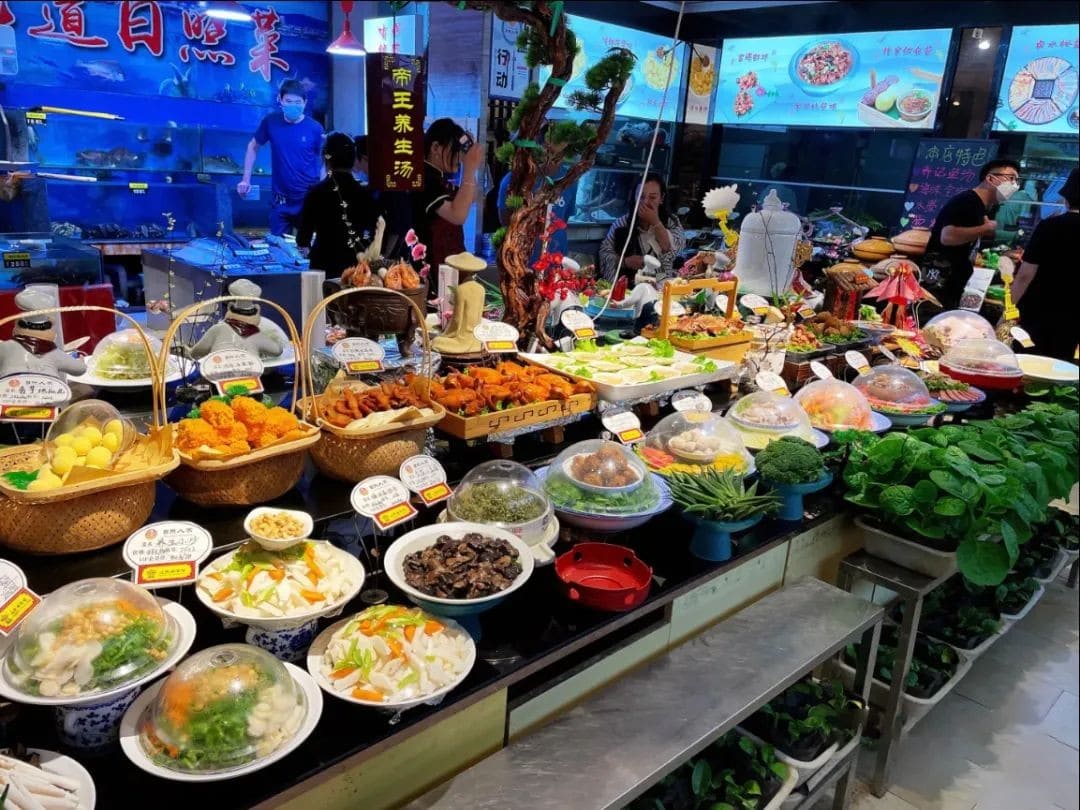
Gate 5 can be disregarded, as it houses a live-action CS field, usually reserved for corporate team-building events and friend gatherings.
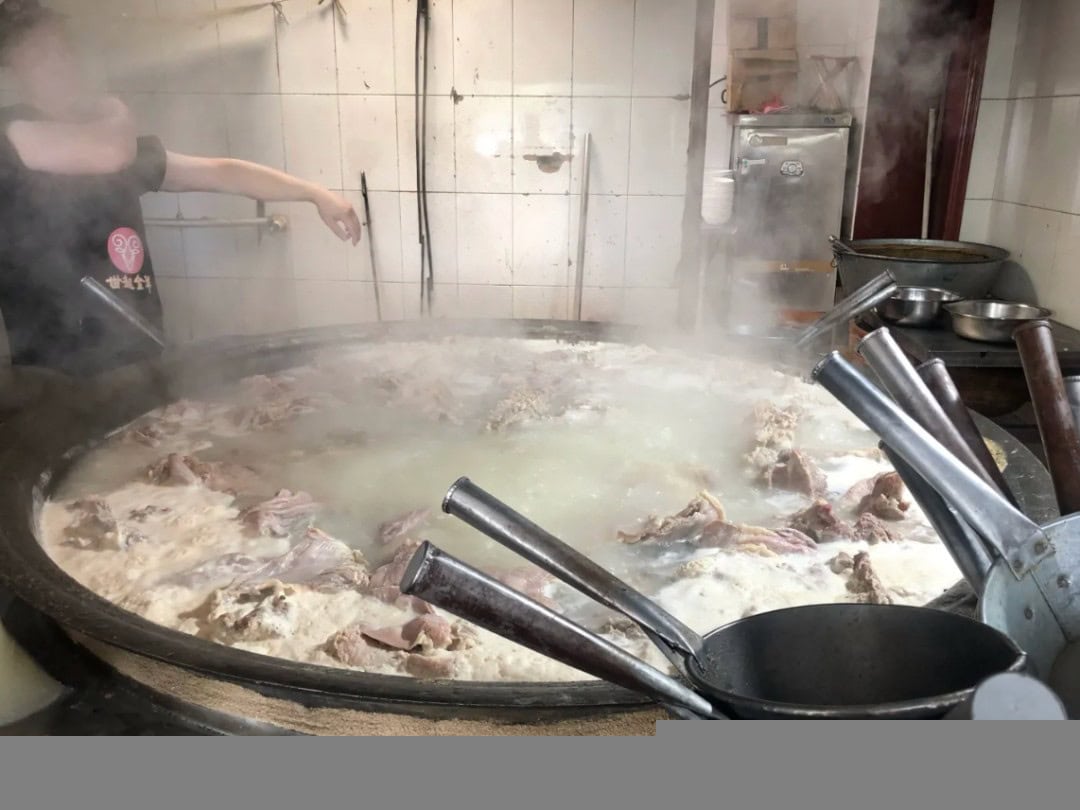
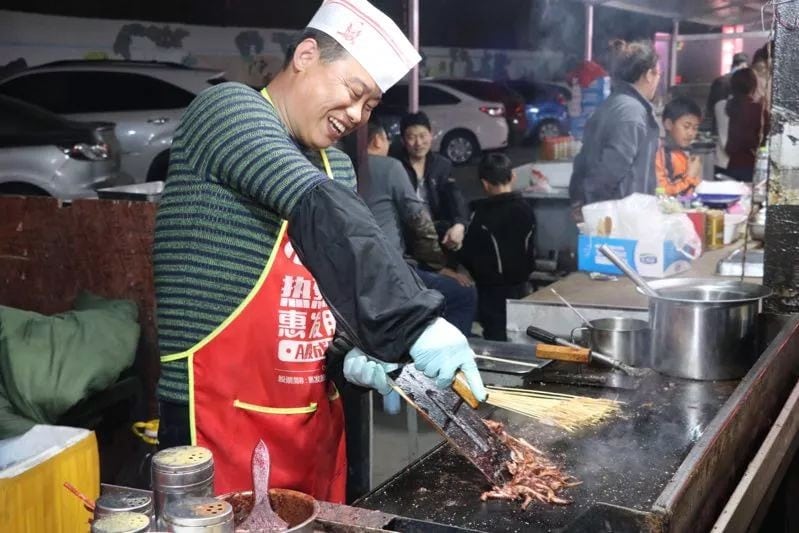
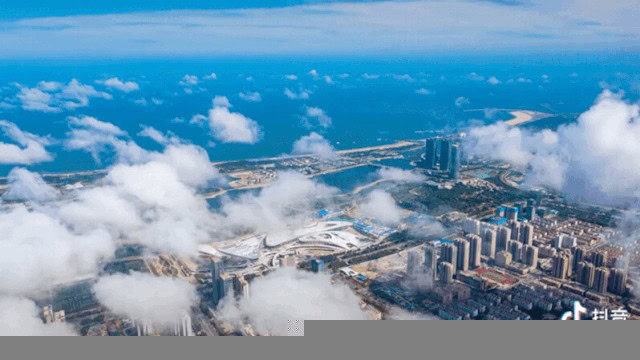
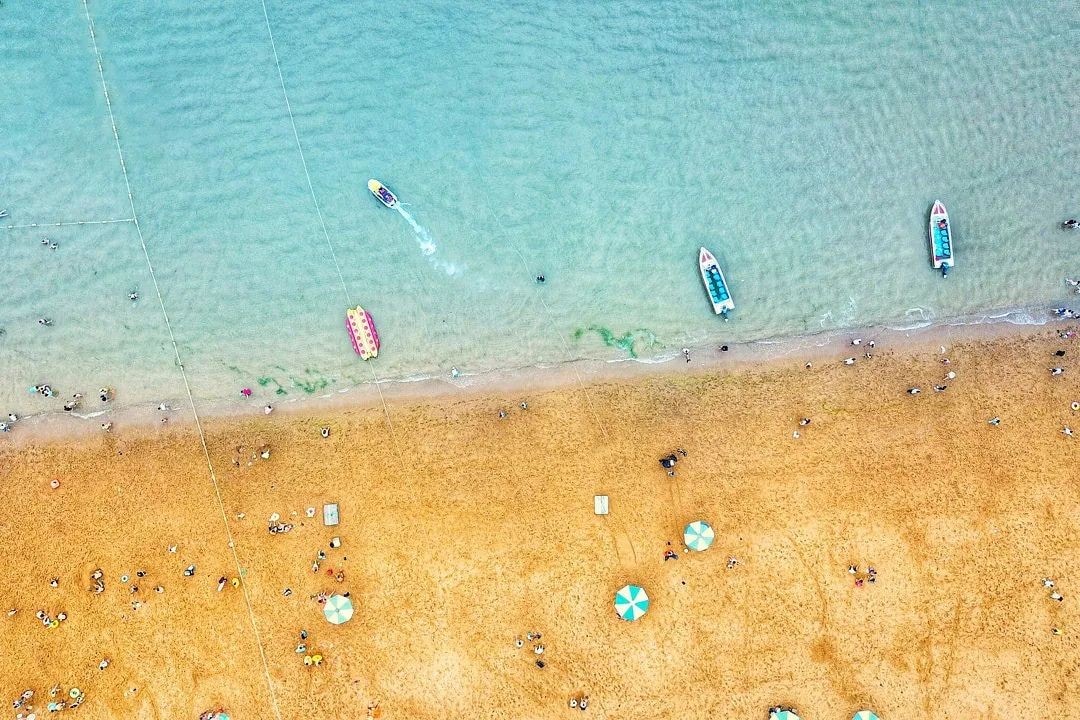
**Rizhao Seaside National Forest Park**
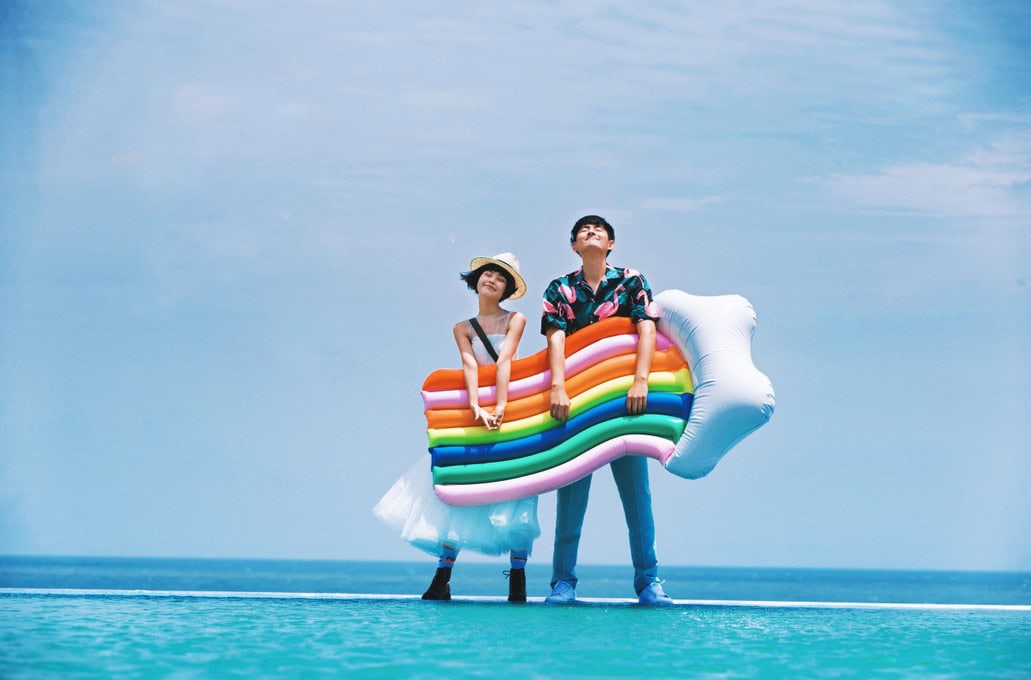
As the name suggests, the Rizhao Seaside National Forest Park combines forest and seaside elements.
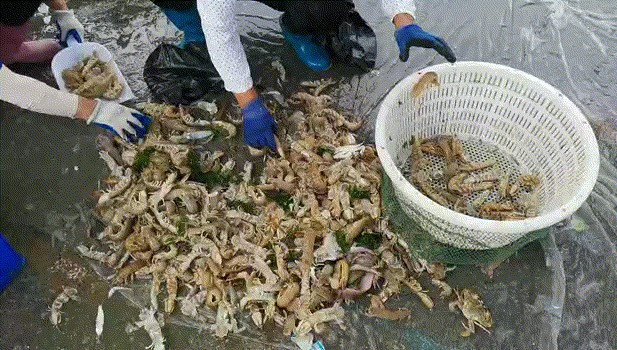
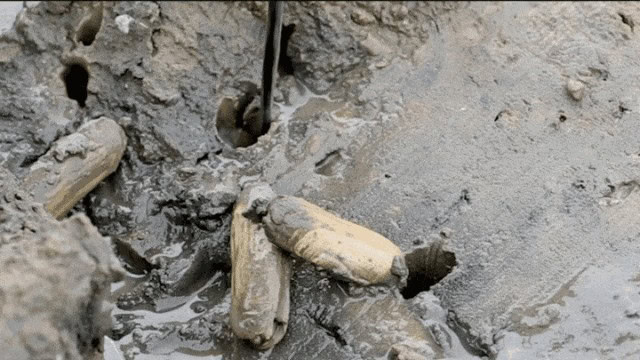
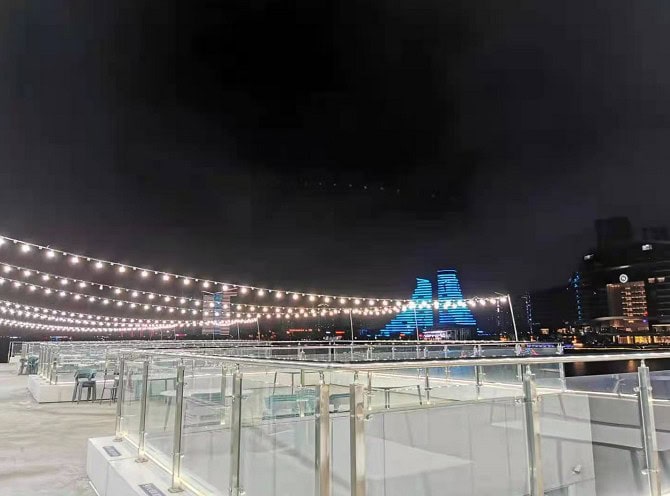
The park boasts a popular stand of Chinese fir trees in Rizhao, leading directly to the beach.
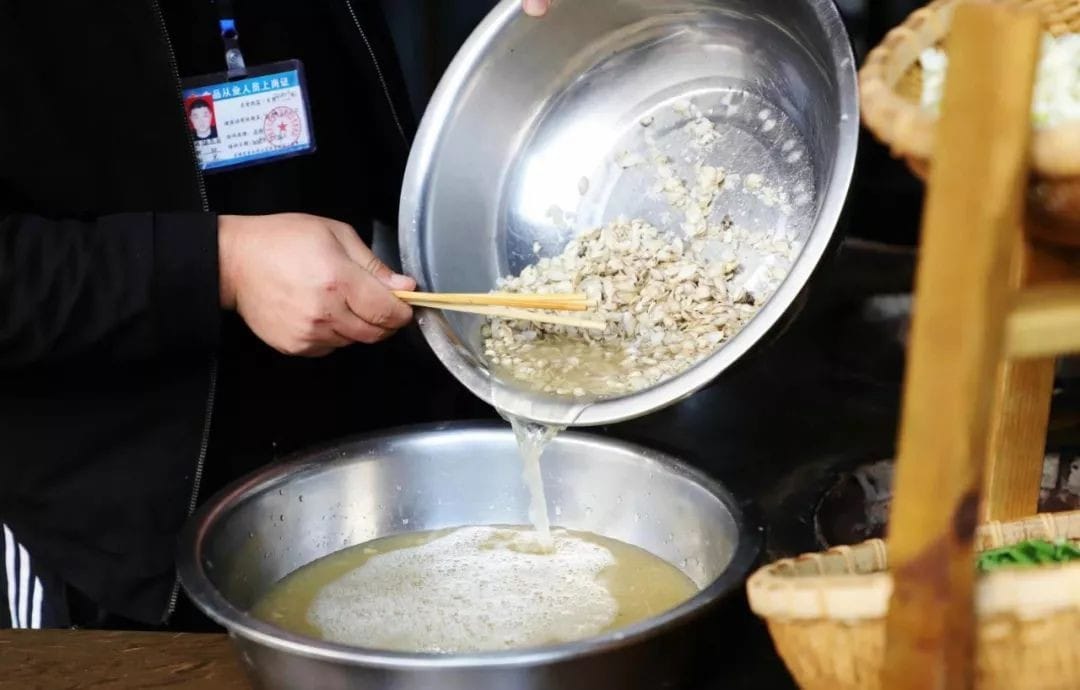
The beach at the park is smaller than that of Wanpingkou, with a coastline of only 7 km. Since it became free to enter, it has lost its title as the “best beach quality in Rizhao.” However, the park offers a variety of activities, making it quite suitable for families with children.
If I had to choose just one, I would lean towards Wanpingkou.
This is because Wanpingkou is very close to the city center, making it more convenient to visit other attractions. Additionally, the area is abundant with restaurants, ensuring a comfortable and hassle-free experience.
The Lighthouse Scenic Area next to Wanpingkou is another landmark in Rizhao, featuring a small public beach and a plaza.
The combination of large rocks and the sea offers great photo opportunities, and the area is usually less crowded, making it a good spot for photography enthusiasts.
If you choose to drive, the Blue Sea Road connecting Wanpingkou and the National Forest Park offers several free-access beaches.
Even if you find the main seaside resorts too crowded during peak season, you can still find quieter spots along Blue Sea Road to enjoy the sea.
**Seaside Resorts and Seafood Gathering Parks**
Rizhao has gained significant popularity through short videos, and seafood gathering has become a must-do activity, without exception.
The best time for beachcombing is from May to September each year. This “best” has nothing to do with the abundance of seafood but is mainly because this is the most comfortable time to visit the beach.
Beachcombing in Rizhao is not greatly affected by the season (otherwise, beachcombing broadcasters would be out of work), primarily depending on the tidal conditions.
It’s best to go after the tide recedes, as the beach will be teeming with fish, shrimp, clams, and crabs. You can check the specific tidal times online.
The days around the second and sixteenth days of the lunar calendar, during the major tidal periods, are the best times for beachcombing each month. During these days, the sea recedes quickly, and you can easily find treasures on the beach.
However, beachcombing is truly neck-straining; the soreness in your neck is comparable to sitting in front of a computer all day!
Rizhao has many free beachcombing parks, such as Zhangjiatai and Lijiatai, both of which are not far from Wanpingkou. Renjiatai, in addition to beachcombing, also has a dock where you can charter a boat for an outing, which is quite recommended if you are in a group.
The most popular beachcombing park in Rizhao is Liujiawan Beachcombing Park, which charges ¥45 per person.
Although it is a bit far and the surroundings are desolate, beachcombing is a highlight of a trip to Rizhao, so I think it’s worth a special trip.
For beginners, clams and sea beans can be easily found by walking a few rounds on the beach or using a small rake, which is quite simple.
For intermediate levels, crabs and razor clams require quick reflexes and some skill. You can learn a few tricks from other experienced beachcombers. If you have the “beachcombing genius” trait, you might catch some on your first day.
Advanced beachcombers can also catch mantis shrimp and octopus, which require not only skill but also a bit of luck. If beginners can catch these, they might consider switching to a career as a beachcombing broadcaster!
The seafood caught during beachcombing can be taken home, and any seafood restaurant outside can process it, which is quite common in Rizhao.
Whether it’s a seawater bath or a beachcombing park, once you enter, you might spend the whole day there, so there’s no need to arrange other activities in Rizhao.
What to eat in Rizhao?
Yellow Sea seafood + Northern Chinese noodles, nothing left out.
Along the coastal cities of Shandong, there is no shortage of seafood.
Rizhao’s traditional fishing industry is developed, with wild seafood dominating. Coupled with the “unbelievably low” prices for a tourist city, the sense of happiness when paying the bill is always high.
When visiting Rizhao, I estimate you won’t stay too long, so every meal should be “spent wisely.” Therefore, I only recommend a few of the most representative restaurants in Rizhao.
Chocolate Fisherman
📍Intersection of Lvzhou Road and Haiqu East Road, Donggang District, southbound 100 meters on the west side
💰¥90/person
Chocolate Fisherman is consistently ranked first among seafood restaurants in Rizhao, always using fresh seafood. Their advantage lies in their own seafood fish tanks, which has earned them a solid reputation in Rizhao.
Their seafood preparation method is straightforward—steamed in a pot (which is also the mainstream method in Rizhao). The deciding factor in the taste is simply the quality of the seafood.
Image: MM Pikachu
After selecting your desired seafood from the large tank at the entrance, the staff will place the lively, jumping seafood into the steamer in front of you. The house-special dipping sauce is also quite remarkable.
After the fishing season begins, staples like oysters and mantis shrimp have noticeably thicker and more substantial meat. Now is the best time to enjoy seafood!
Image: QD Milk and Biscuit
Moreover, they started as a small seafood stall, and it’s rare that even now, all the feedback about their service is positive. It’s said that prices have increased, but they still follow a popular and affordable route.
Image: QD Milk and Biscuit
Qianwangyuan Seafood Restaurant
📍South side of No. 1 Parking Lot, South of Wanpingkou, Eastmost of Haiqu Road, Donggang District
💰¥80/person
Qianwangyuan is a well-established restaurant with a high reputation among locals, specializing in Jiaodong cuisine, including Jiaodong-style seafood. Compared to the mainstream steamed seafood in Rizhao, they are more recommended for those who prefer a stronger flavor.
Image: Mercury97
Qianwangyuan excels in preparing deep-sea fish. Fish like turbot and grouper are perfect for the Jiaodong cooking style, where the sauce wraps around the tender fish. The seasoning looks intense, but it’s incredibly fresh and flavorful.
Image: Lu He Ba
Since moving to their new seaside location, the view has improved significantly. I think it’s better to visit in the evening. After watching the sunset, the illuminated night view of the sea is also beautiful.
Sitting on the second-floor terrace, enjoying the sea breeze and seafood, is a very Rizhao-style relaxation.
Rizhao Renjia
📍No. 216, Wendeng Road, Qinlou Street, Donggang District
Rizhao Renjia is a restaurant that combines the flavors of Shandong and Jiangsu, with a focus on seafood. Their seafood is fresh and the taste is authentic, making it a popular choice among locals and tourists alike.
Image: QD Milk and Biscuit
Their menu features a variety of seafood dishes, each prepared with care and attention to detail. The freshness of the seafood is evident in every bite, and the flavors are well-balanced and satisfying.
Image: Lu He Ba
The restaurant’s location is convenient, and the atmosphere is warm and welcoming. Whether you’re looking for a quick bite or a leisurely meal, Rizhao Renjia offers a pleasant dining experience.
Sitting by the window, you can enjoy the view of the bustling street while savoring the delicious seafood. It’s a great way to experience the local culture and cuisine.
💰¥130/person
The two restaurants ahead are likely to have long queues during peak meal times, even at their branches. This is simply because the demand far exceeds the supply.
If you’re looking to try Jiaodong cuisine, I would also recommend Rizhao Renjia, a well-known old brand that locals often choose for banquets. They offer a wide variety of dishes, all reliably tasty, and you generally won’t have to wait for a table.
Image: Xianbei Xiaojie
Image: Chunyi
In my mother’s theory, a restaurant that excels in banquet-style dishes will also do well with ordinary dishes. Rizhao Renjia indeed fits this “folk law.”
From fresh seafood to home-style Jiaodong dishes, their offerings are consistently good. The per-person cost is slightly higher than that of Chocolate Fisherman’s House, but it remains highly cost-effective compared to the large restaurants in Qingdao.
Image: Chunyi
**Haishazi Noodles**
📍1st Floor, Yadu Art Museum, 130 Yantai Road, Donggang District
💰¥30/person
Fresh seafood has its own unique preparation methods. The people of Rizhao treat even the smallest seafood with respect, ensuring nothing goes to waste.
I know you have to try mackerel dumplings when visiting Qingdao, but in Rizhao, you should also add Haishazi noodles to your list.
Haishazi, found on the beaches of Rizhao, are super tiny clams. Properly prepared, they can make a broth that surpasses any artificially flavored soup.
Due to the laborious preparation of Haishazi, they are not very common in Rizhao anymore. A well-known shop, whose owner has a rather uninspired naming sense, simply calls itself Haishazi Noodles.
There is also a branch in Dongyi Ancient Town, which, although touristy, offers reasonable prices and fairly authentic flavors.
Before serving, a handful of chives is added, and the noodles are hand-pulled. The resulting Haishazi noodles are on par with seafood noodles that are topped with extra ingredients.
**Juxian Shiqi Whole Lamb Restaurant (Yunhai Road Branch)**
📍Street-front Building, Hebian Residential Area, West Section of Yunhai Road, Donggang District
💰¥30/person
If the weather gets a bit colder, when you come to Rizhao, remember to have a bowl of lamb soup in addition to enjoying seafood.
The origin of Rizhao lamb soup is in Ju County, where the locals say, “The deliciousness of lamb soup can rival that of fugu,” but it takes an hour’s drive. I don’t think it’s worth a special trip, though the famous Shiqi Quanyang Restaurant in Ju County also has a branch in the city center.
After selecting mutton, offal, and lamb blood at the counter, the lamb soup, side dishes, and Shandong flatbread are all unlimited and free to refill, giving you a taste of the hospitality of Shandong!
The old shop sees hundreds of people enjoying lamb soup simultaneously every noon. If you’re feeling lazy, just go to the branch to experience this way of eating.
If you plan to stay overnight in Rizhao and want to find the most vibrant part of the city, head to the University City Night Market.
As you know, near the university, things are inexpensive and there are a plethora of snacks, featuring specialties from all over the country.
Some long-standing stalls, like the famous Juewei Mianjin Ge who turned skewers into a shop, the 80s Mianjin where you order first and come back for your skewers after a stroll, and the Sichuan flavor that has become part of the “university taste” with its fried noodles and rice… There are also 10 yuan for three squid tentacles and 15 yuan for a box of small snails in sauce. It’s not just students who come to eat and shop here.
The University City Night Market is also one of the most lively places in the city center at night. Although the food might not be the best in all of Rizhao, dining also needs an atmosphere. Before you know it, you’ve bought a bunch of snacks.
You might wonder, since Rizhao is so close to Qingdao, which is better, the advantages or the disadvantages? After all, Qingdao’s tourism halo is so bright that it’s really hard to notice Rizhao next door.
However, if you’ve been to Qingdao multiple times and want to explore some new destinations, Rizhao, with its budget-friendly prices, is definitely worth a visit. With the fishing season in full swing, taking a 0.5-hour high-speed train to Rizhao for seafood is a worthwhile trip!
🚗
/Travel Tips/
Rizhao Shanzihe Airport has direct flights to major cities in China, including Beijing, Guangzhou, Shanghai, Hangzhou, Kunming, Nanchang, Dalian, Shenyang, Guizhou, and more.
Of course, I think most of you will choose to fly to Qingdao first and then take a 0.5-hour high-speed train to Rizhao. There are many daily return trips, making it very convenient.

